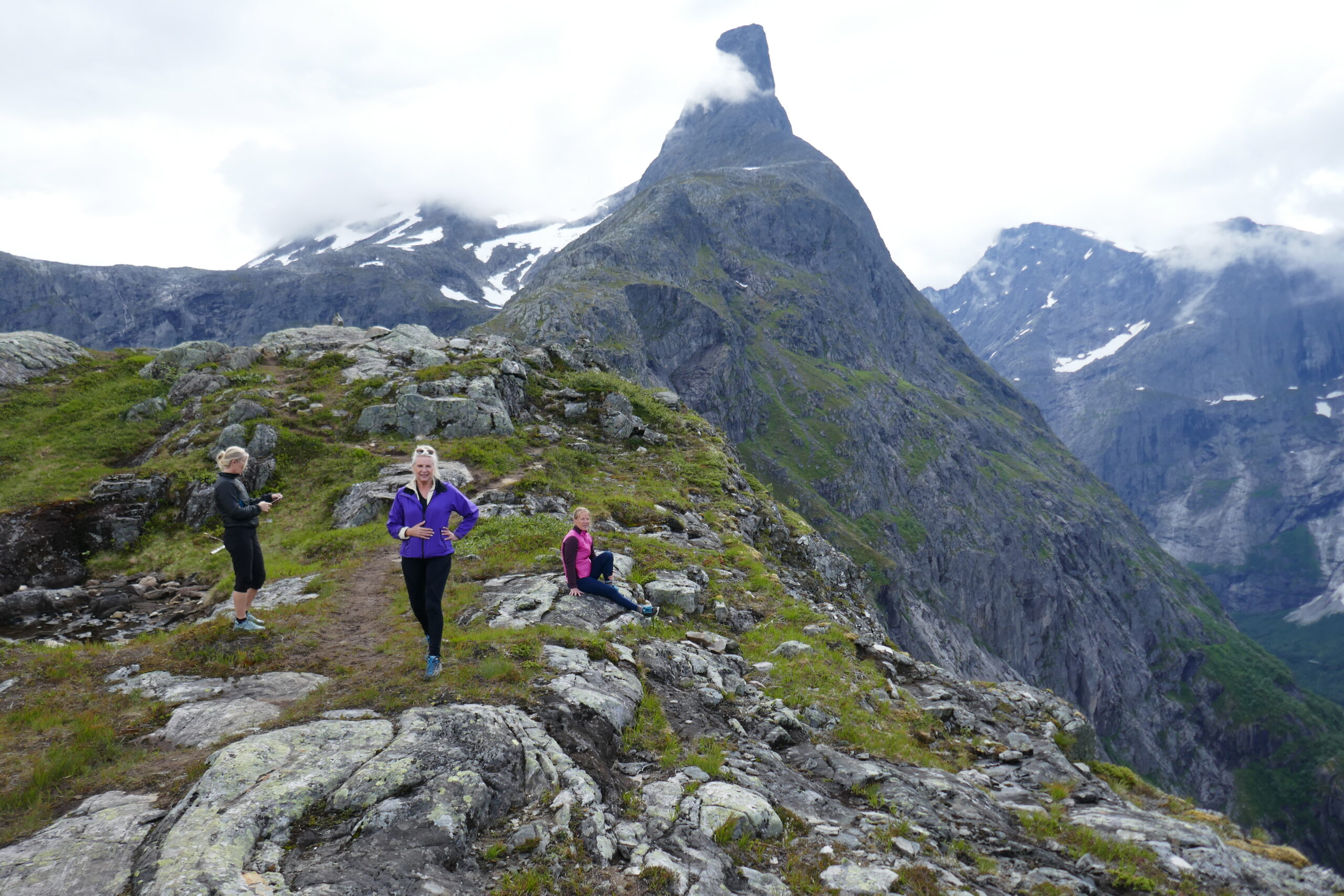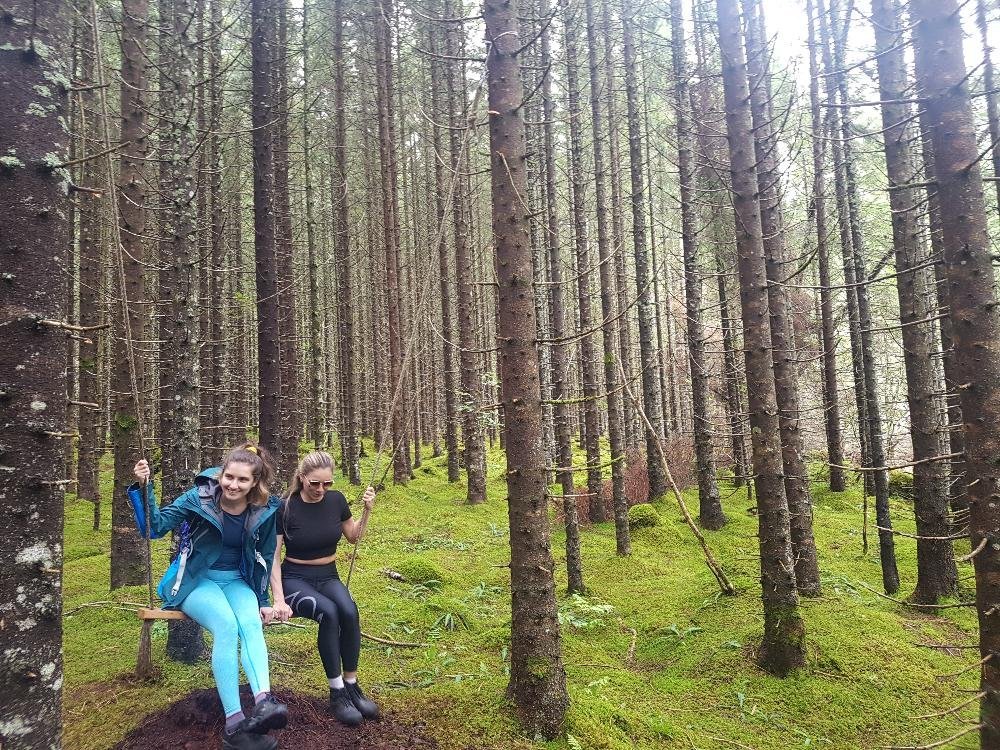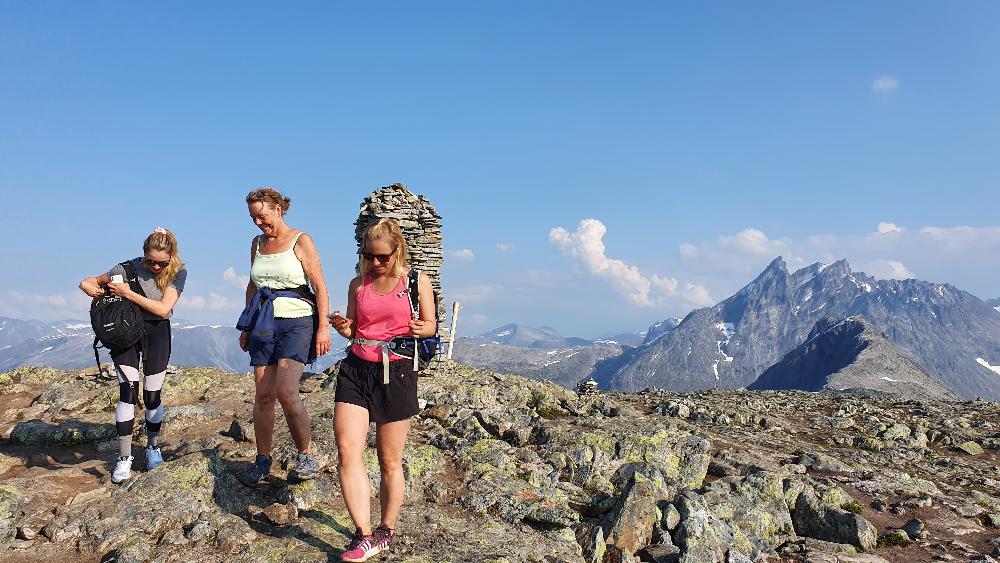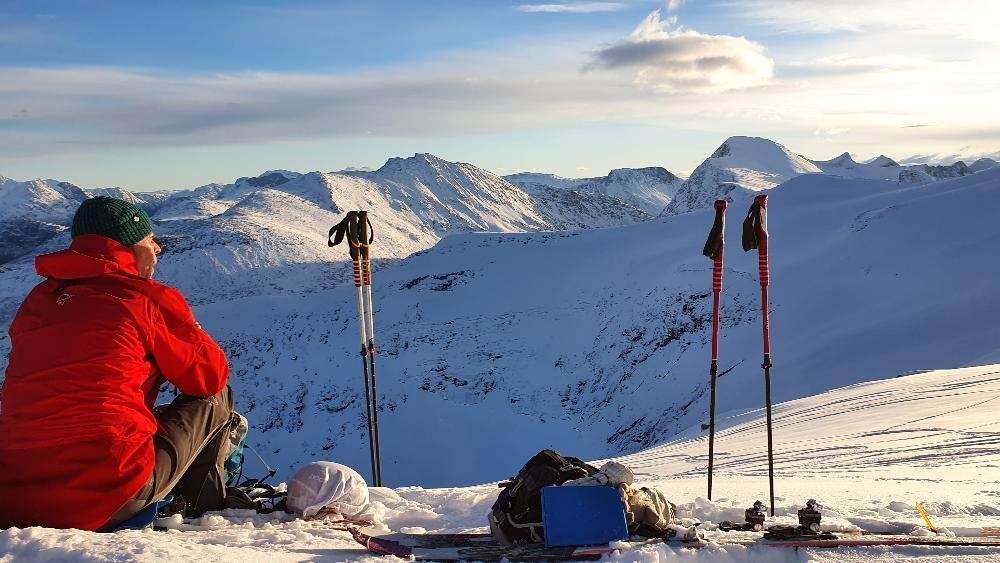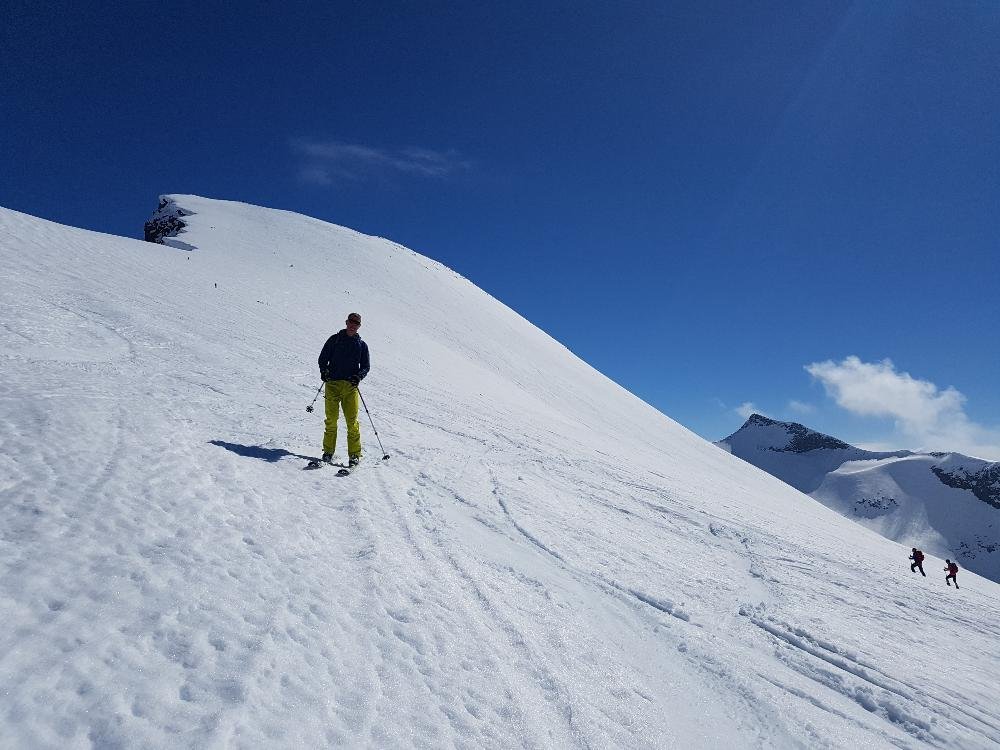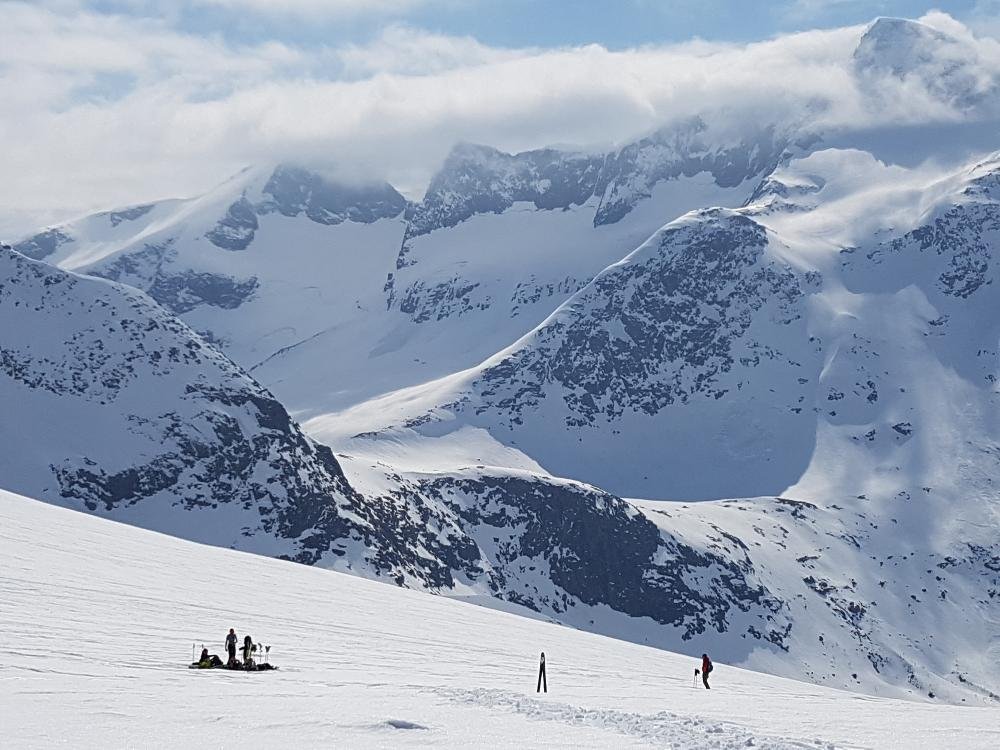Yoga, Hiking, and Adventure: My First Retreat in South Africa
In February 2023, I embarked on an extraordinary journey to South Africa, leading my first hiking and yoga retreat in that exciting country. South Africa is a truly fascinating and magnificent country packed with incredible wildlife, the most breathtaking landscapes, and complex history. Known for its beaches, mountains, and savannas, it's a trendy place for tourists. South Africa has been called “A world in one country”. It offers cosmopolitan cities, a rainbow nation of richly diverse cultures, spectacular scenery, and of course the Big Five safari experience. It is the only country in the world to contain an entire floral kingdom. It is home to more kinds of mammals than North and South America combined; or Europe and Asia together. South African grasslands have approximately 30 species per square kilometer, greater than the biodiversity of rainforests.
Organizing this retreat was a dream come true for me, and I couldn't wait to share the beauty of South Africa's landscapes with a group of ten women from various corners of the world – Norway, the USA, Switzerland, the UK, Estonia, and Lebanon. With the assistance of a local travel company, Amatungulu Tours, we set out on an unforgettable adventure filled with yoga, hiking, relaxation, and exploration. Our tour guide, Jakes, possesses an unparalleled depth of knowledge about South African nature, history, and every aspect of the region, enriching our journey with his expertise and passion.
Our yoga retreat started at Cape Town International Airport in South Africa. Some of us arrived in Cape Town a few days before the retreat began, and we decided to embark on a memorable hike up Lion's Head Mountain. As the sun dipped below the horizon on one side, we were treated to the mesmerizing sight of the full moon rising on the other, casting a magical glow over the landscape.
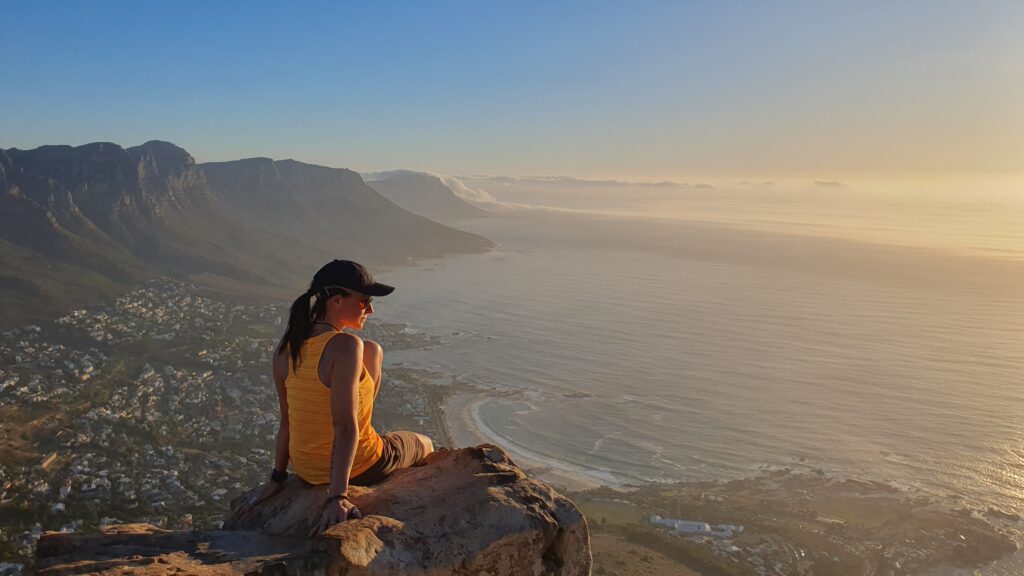
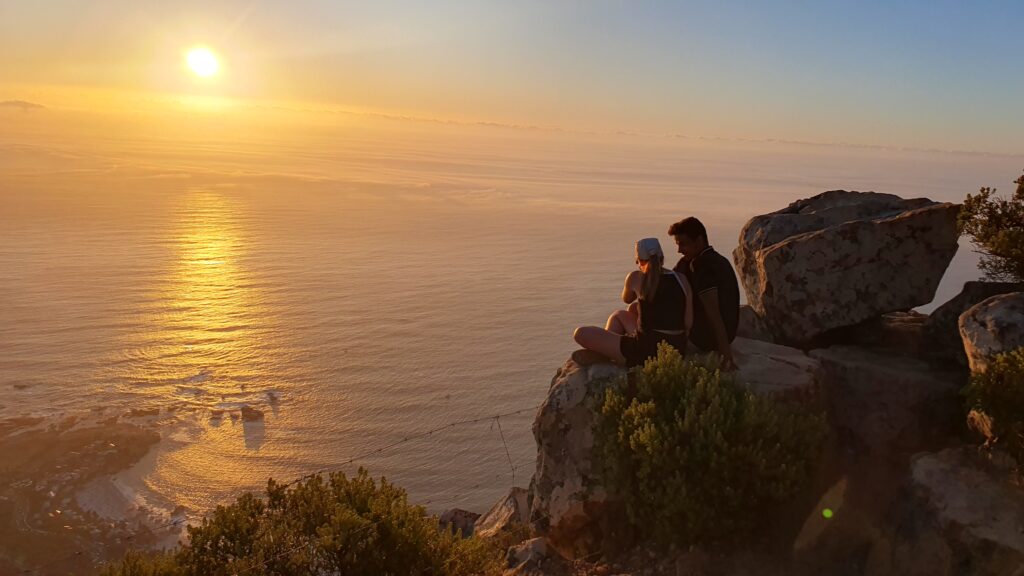
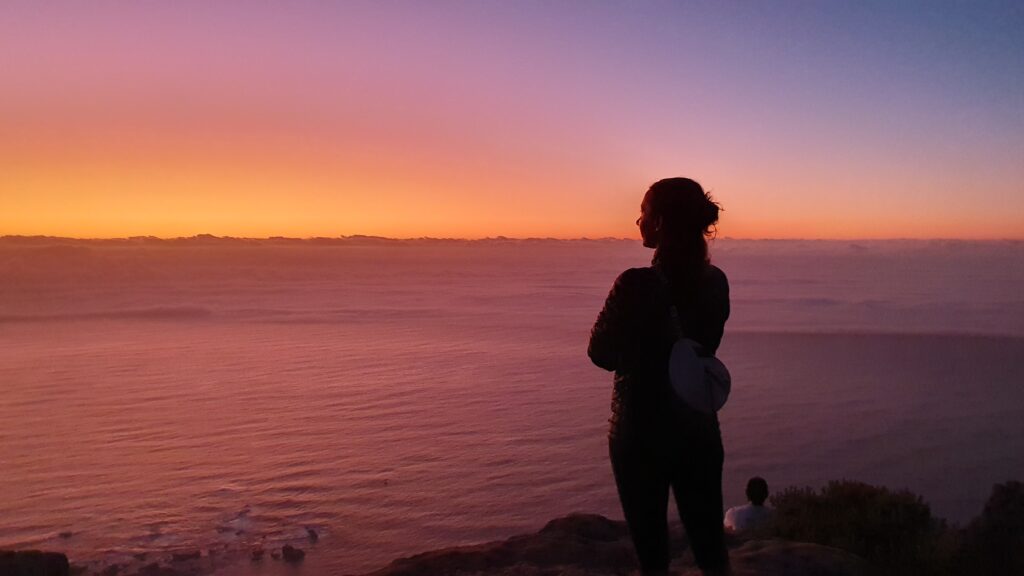
In my opinion, the Lion’s Head hike is one of the top things to do in Cape Town, offering unparalleled views of the city and its surroundings. Situated within the Table Mountain National Park, Lion’s Head reaches a peak of 669 meters above sea level. It was a special experience for me as my daughter Maria and some of her friends were also in South Africa at the same time, allowing us to share quality time on this hike. Additionally, Cape Town offers incredible opportunities for paragliding, and we couldn't resist seizing the chance to take to the skies and soak in the breathtaking vistas from above.
Exploring Cape Town and Hiking Table Mountain
Cape Town is one of three capital cities in South Africa. This seaside city is beautiful and picturesque with a great backdrop of the famous Table Mountain National Park. South Africa’s top tourist destination has many beautiful coastlines and beaches nearby, many whale-watching tours, amazing scenery, and a walkable waterfront area with tons of great restaurants, shopping, and more.
Cape Town, the “Mother City”, or the world’s most fabulous city, is the oldest city in South Africa and has a cultural heritage spanning more than 300 years.
Our journey started with an awe-inspiring hike up Table Mountain, one of South Africa's most iconic landmarks. As we ascended, the beauty of the surrounding landscape took our breath away. The iconic Table Mountain in Cape Town is believed to be one of the oldest mountains in the world, at 260 million years old. Not only that, it is one of the world’s 7 New Natural Wonders and is also one of the planet’s 12 main energy centers, radiating magnetic, electric, and spiritual energy.
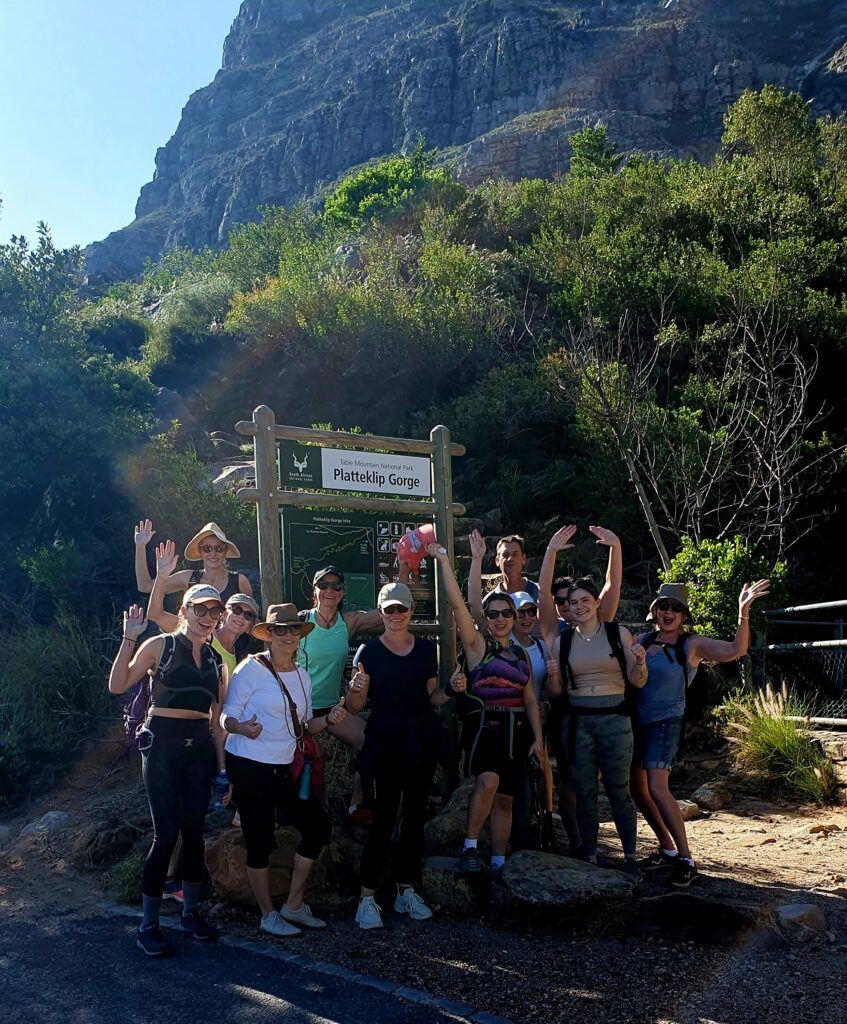
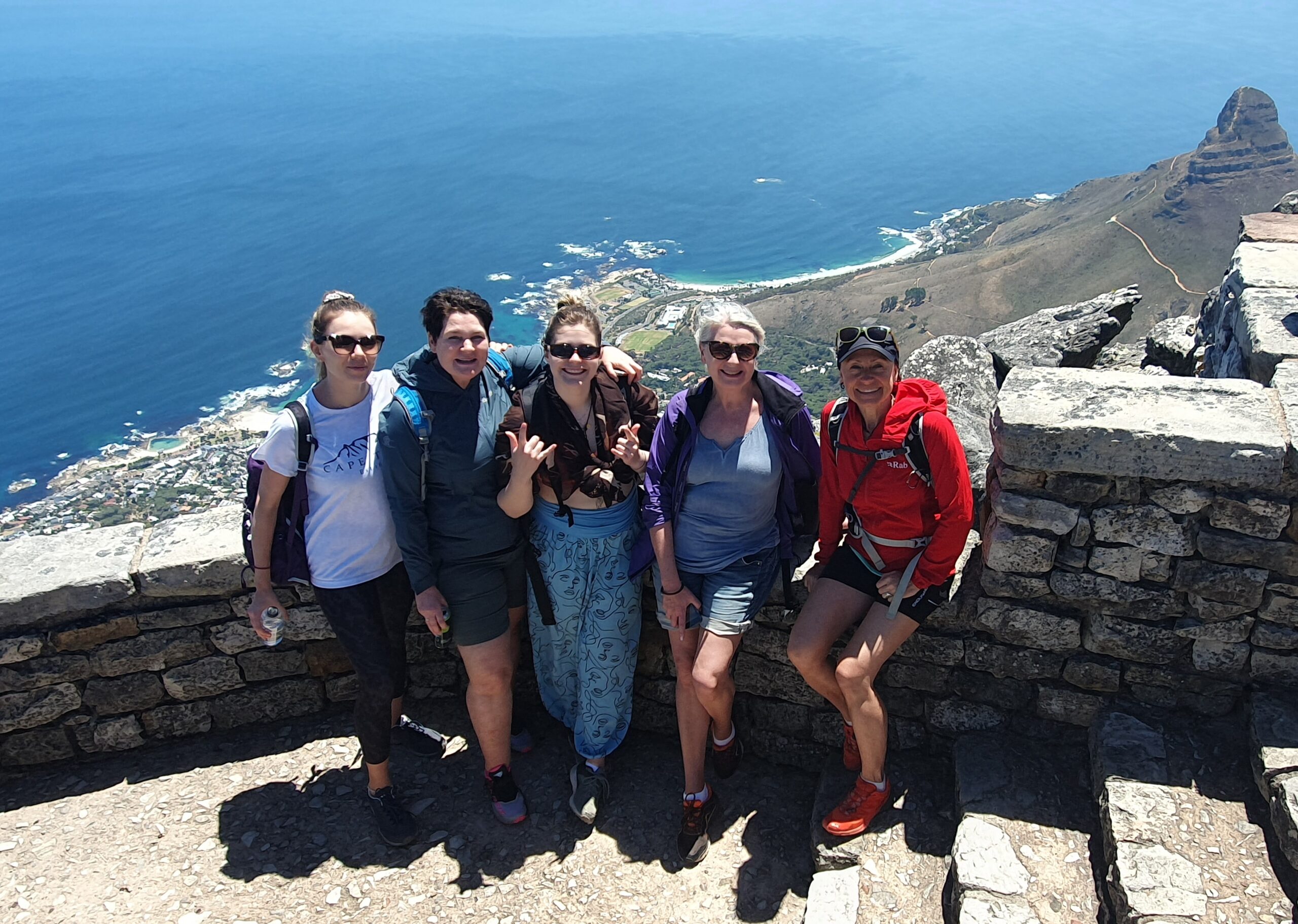
Hiking up to Table Mountain was an invigorating experience, though the moderate trail presented its challenges, particularly exacerbated by the scorching heat. Despite the demanding conditions, our determination fueled our ascent, and reaching the summit filled us with a profound sense of accomplishment. Pausing to catch our breath and capture breathtaking photos of the panoramic vistas, we marveled at the majestic beauty that surrounded us. It was sunny, so we decided to ride the gondola back down to cool off, and we still saw the scenery from above.
After descending, we visited Kirstenbosch National Botanical Garden, a UNESCO-listed site dedicated to preserving the country's unique flora. At Kirstenbosch National Botanical Garden, we enjoyed a lovely stroll surrounded by stunning plant life. Jakes shared fascinating information about the different plants and the importance of preserving nature. It was a peaceful and educational experience, connecting us even more deeply with the natural world around us. The day concluded with a delightful wine-tasting experience at Groot Constantia Wine Farm, where we indulged in exquisite wines and savored a delicious dinner with sweeping views of Muizenberg.
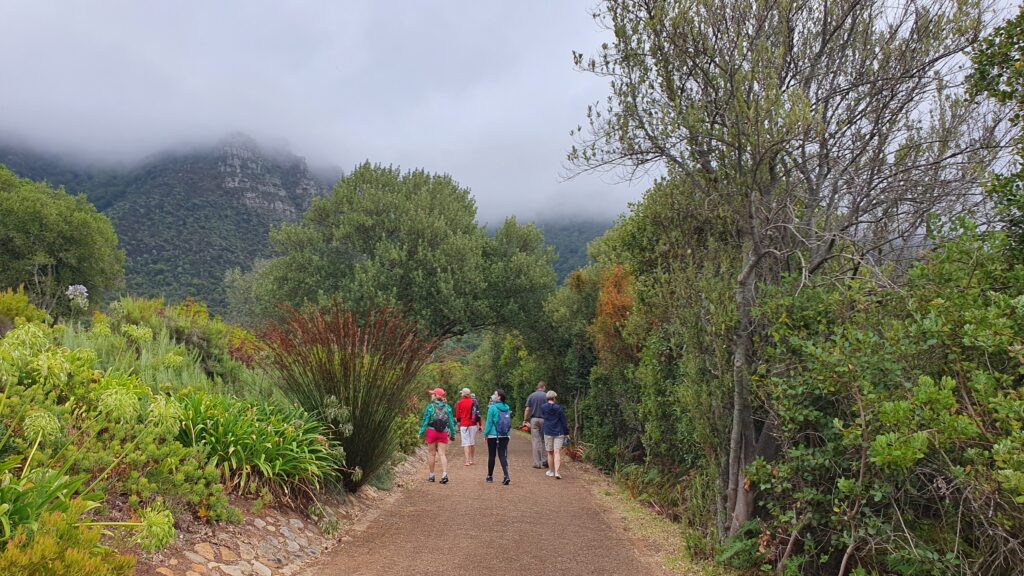
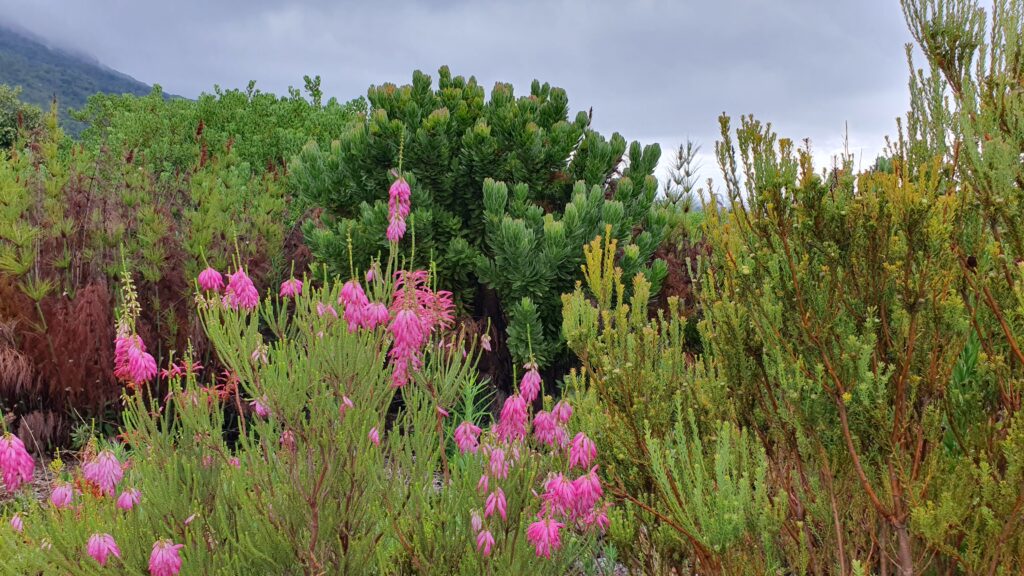
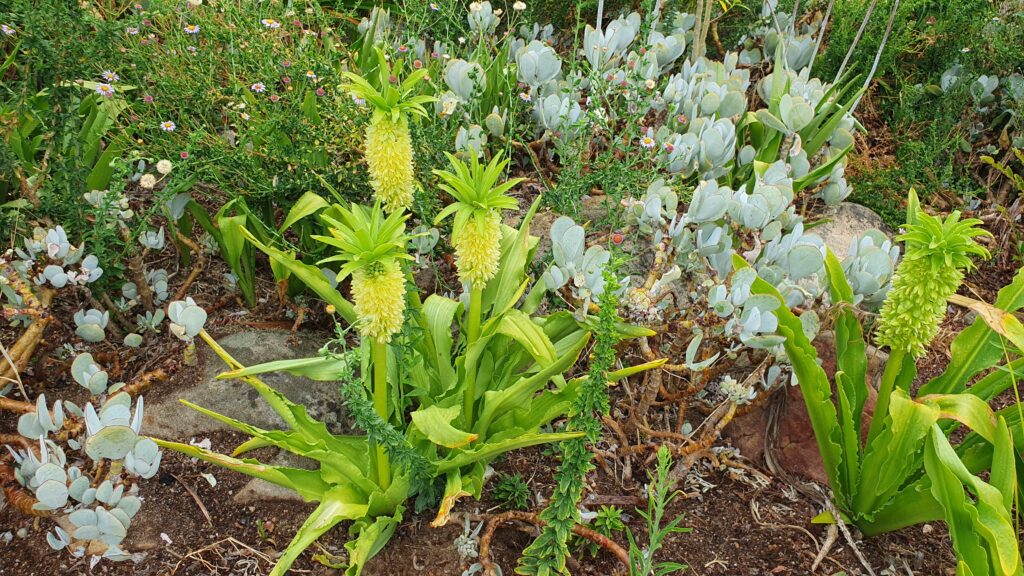
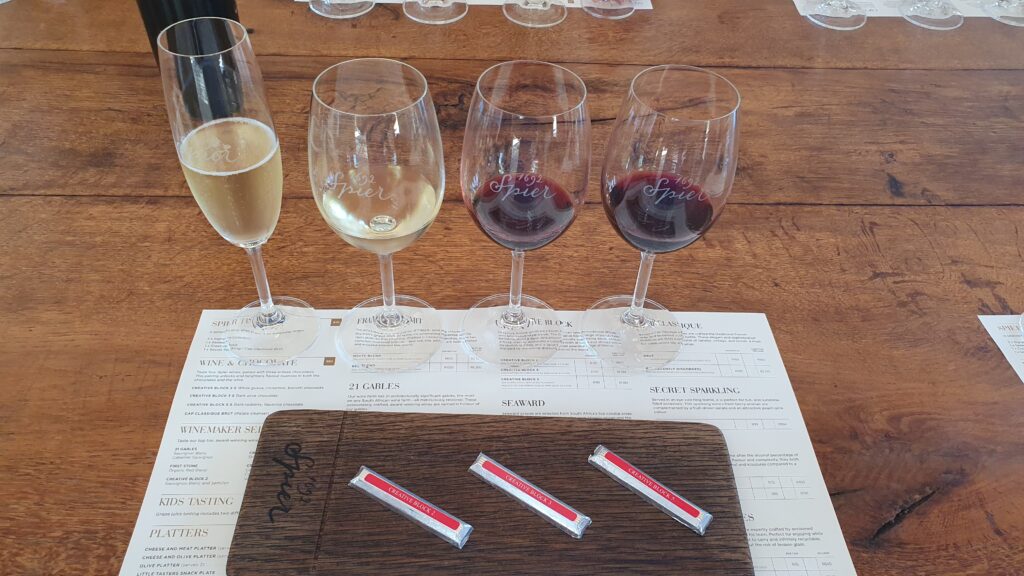
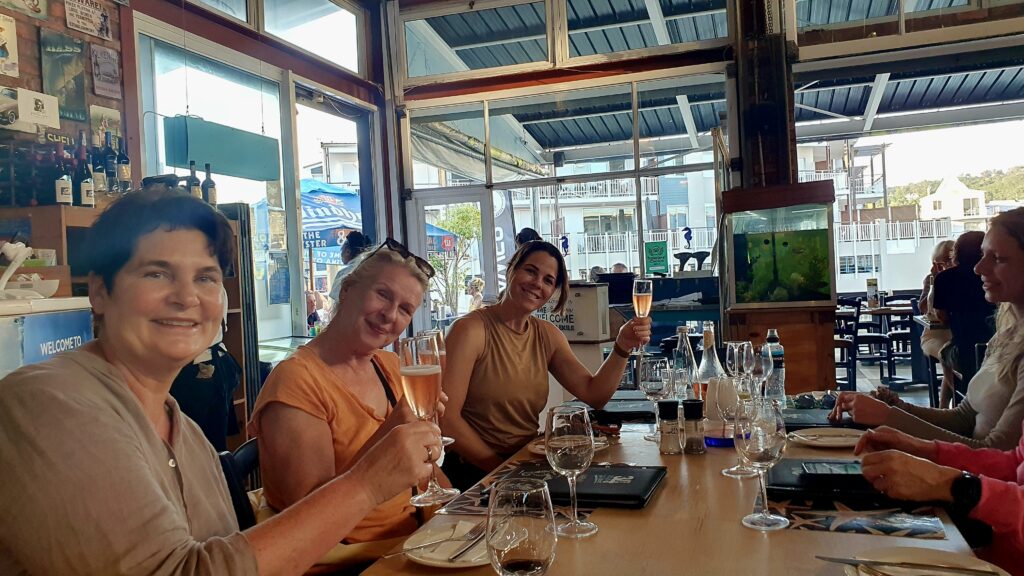
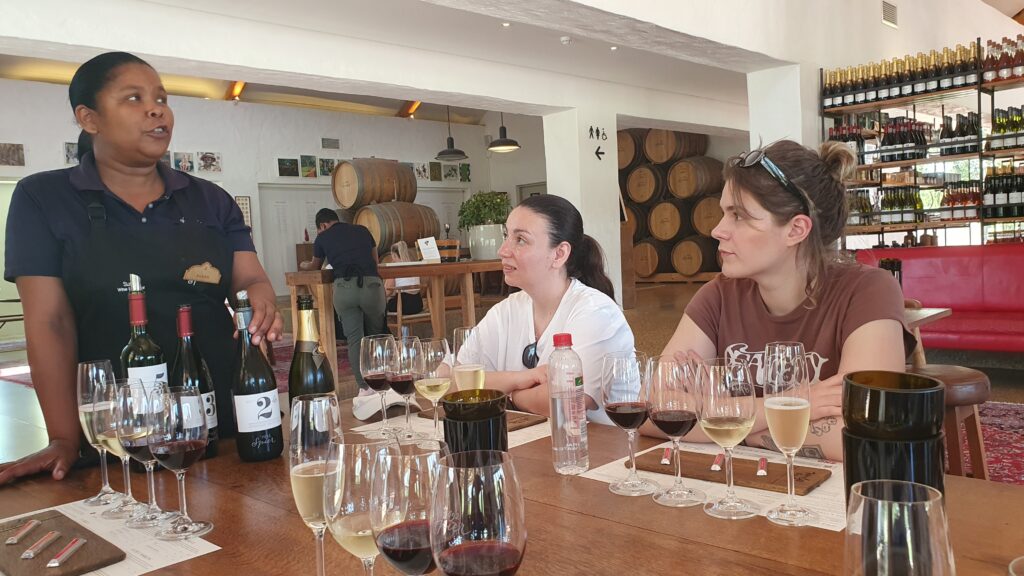
Penguins, Relaxing, and Diaz Beach Yoga
On our second day, we ventured along the False Bay coastline to Boulders Beach, home to a charming colony of African Penguins. Witnessing these delightful creatures in their natural habitat was a truly unforgettable experience. We spent the rest of the day relaxing and rejuvenating, indulging in beach yoga sessions and savoring delicious cuisine at one of the local restaurants.
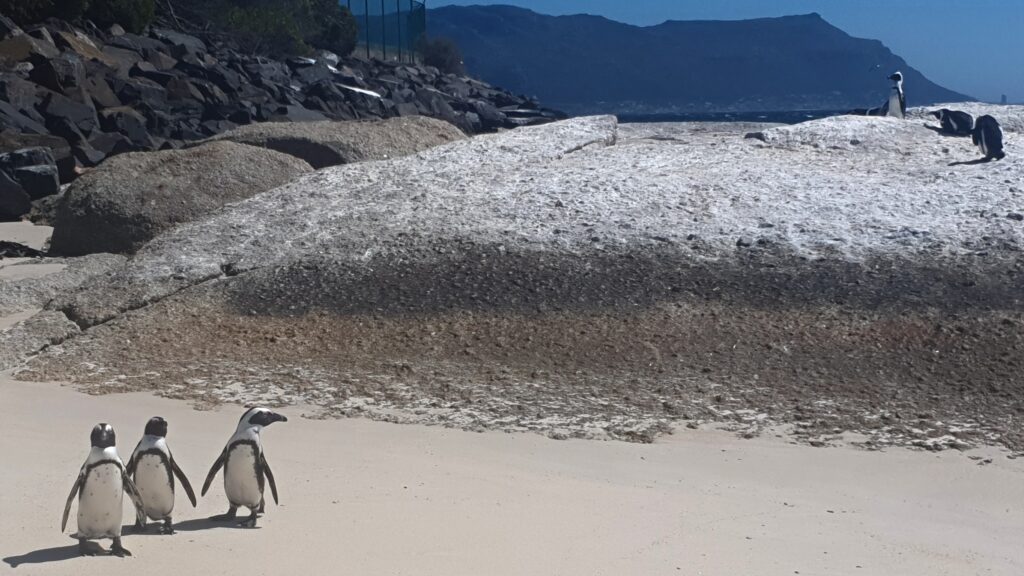
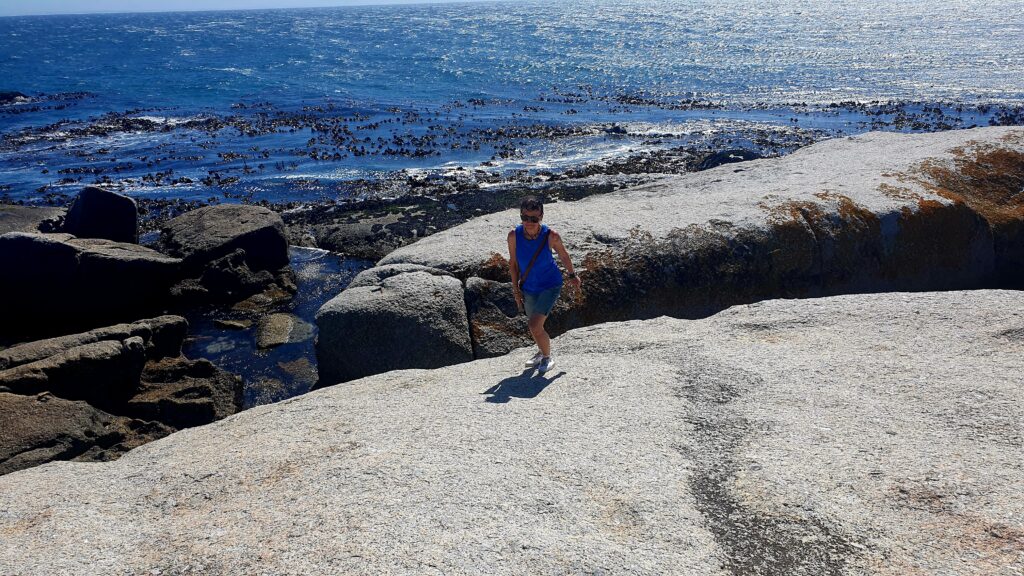
Wine Tasting, Cape Point, Spa, and Yoga
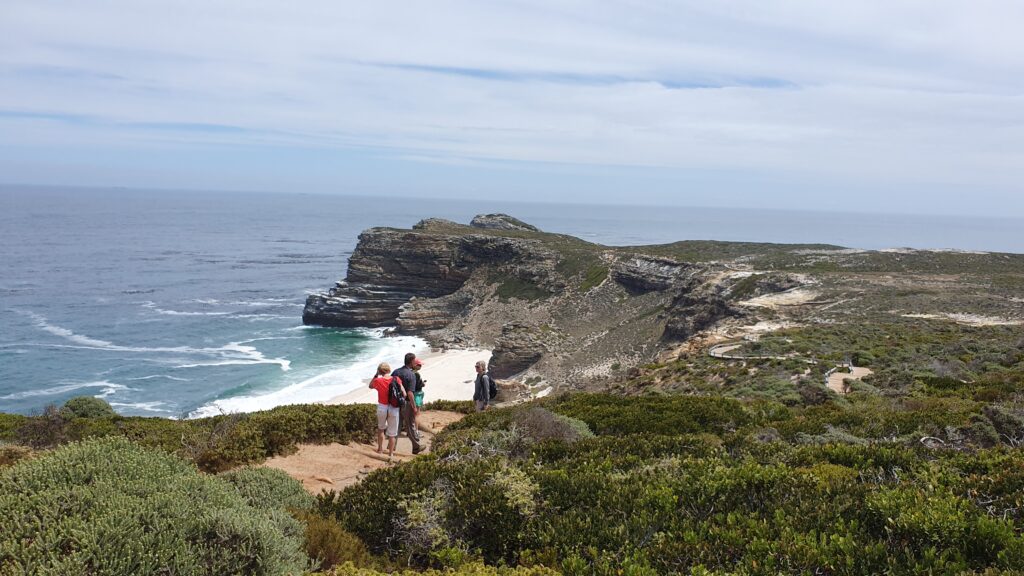
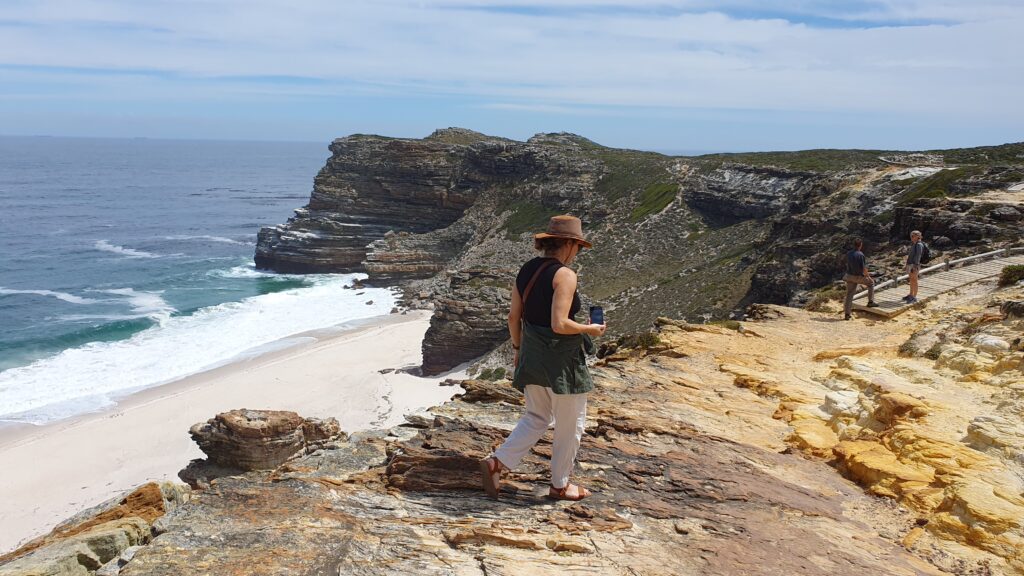
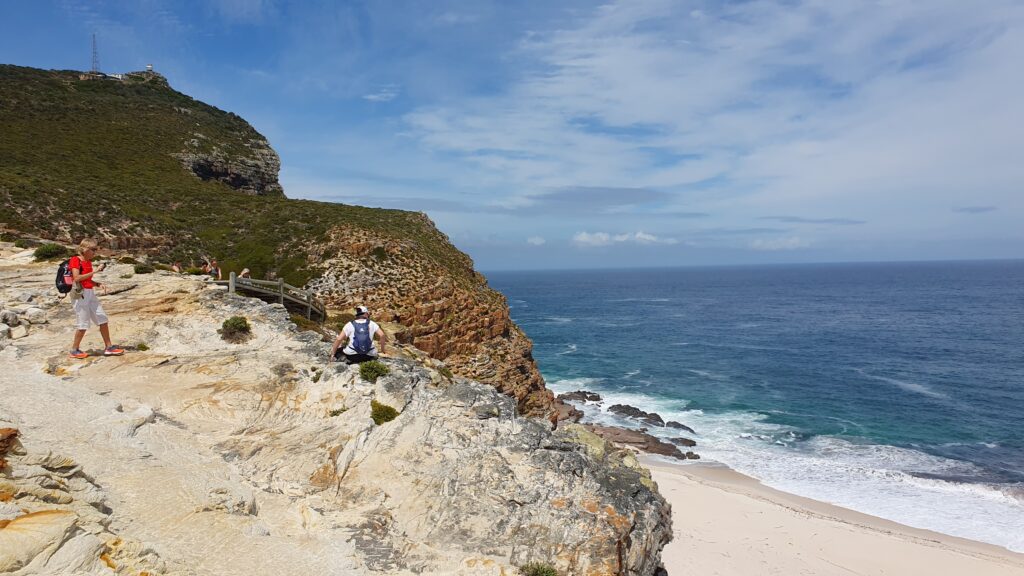
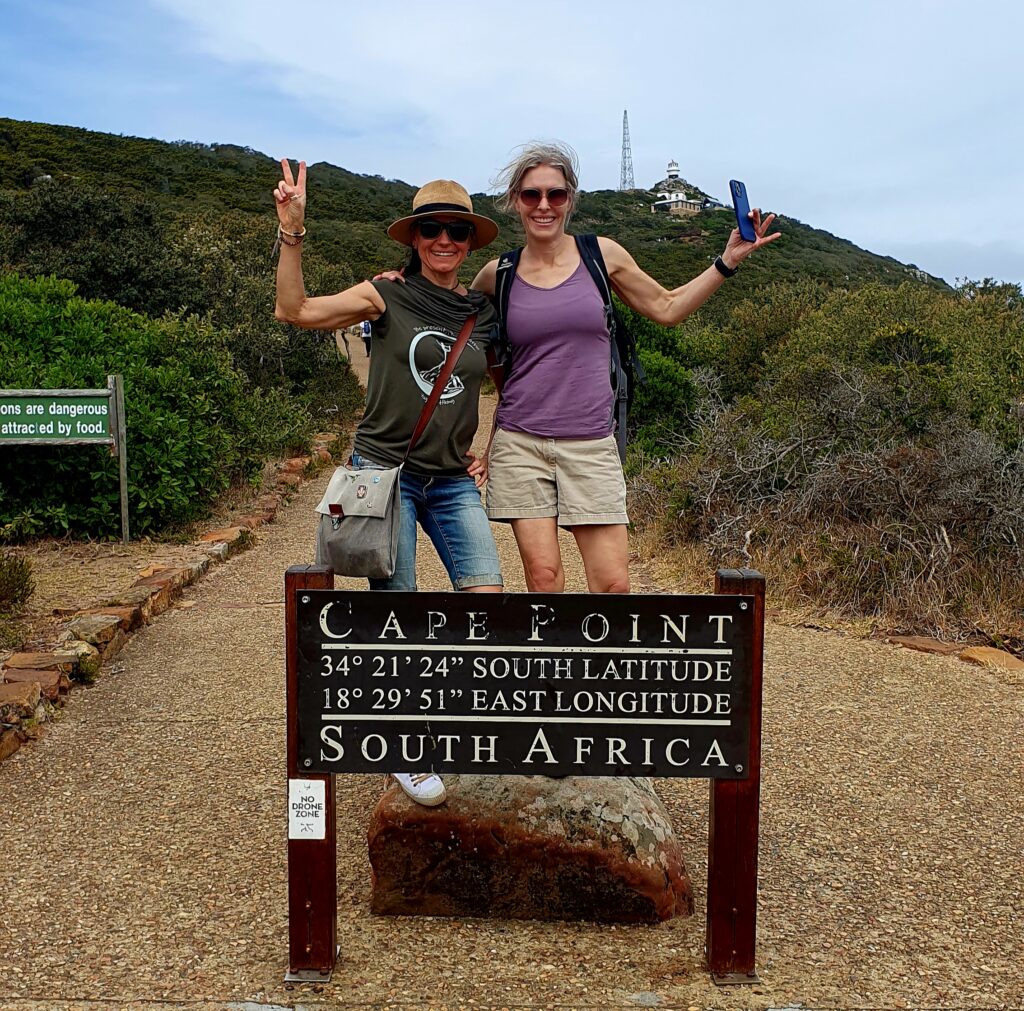
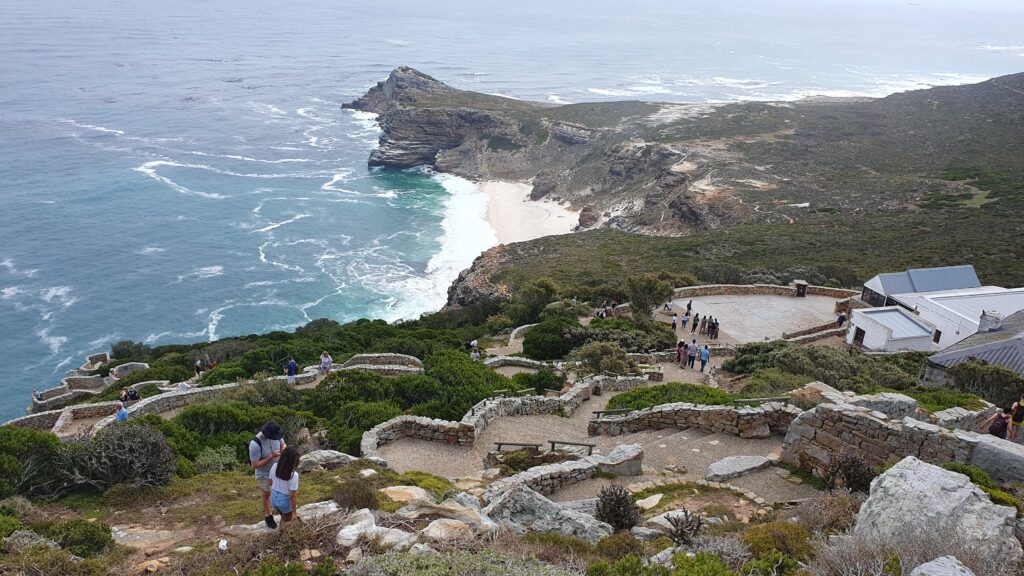
Our journey continued with a visit to Cape Point, where we immersed ourselves in the breathtaking beauty of the Table Mountain National Park. After a refreshing yoga and meditation session on Dias Beach, we indulged in wine and chocolate tasting at Spier Wine Farm.
The highlight of the day was our stay at The Caledon Hotel and Spa, where we immersed ourselves in relaxation and pampering, enjoying mineral-rich hot springs and a range of spa treatments. The spa hotel is situated around an hour’s drive away from Cape Town and offers guests mineral-rich hot springs and a spa with three restaurants, a gym, and children’s activities offered to all guests. The wellness center is equipped with comfortable seating, natural hot springs, a lap pool, a steam room, a sauna, a frigidarium (the distinctive brown color of the water is due to the rich mineral content known as chalybeate), a Swiss shower, elegant Victorian Bath House (erected 1897), and outdoor Jacuzzi, as well as a great Zen Garden. A full range of spa treatments including massages, body wraps, facials, and beauty therapies are on offer as an option
Exploring the Garden Route and Cango Caves
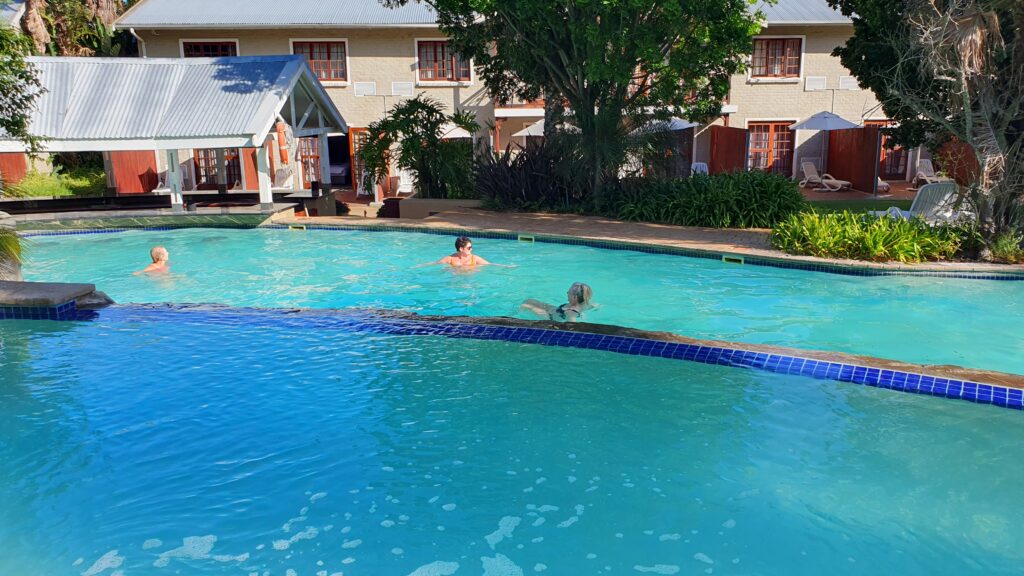
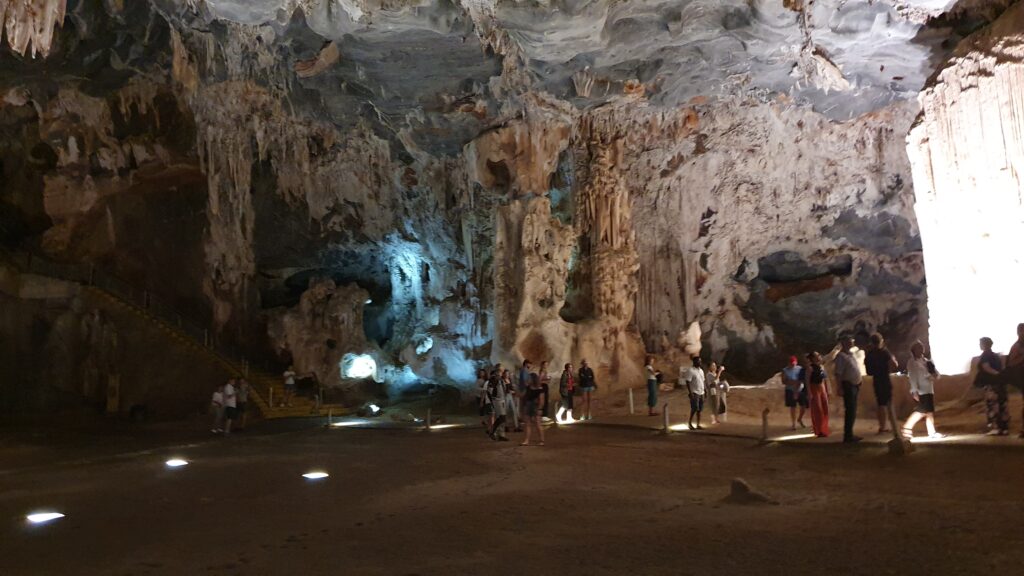
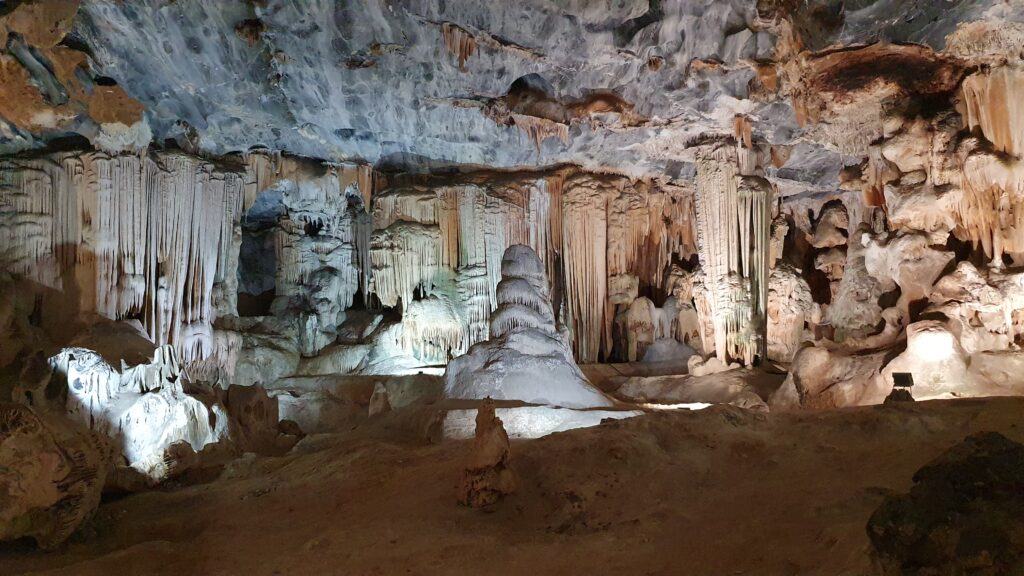
We embarked on a scenic drive to Knysna via the Cango Caves, marveling at the natural beauty of the Garden Route along the way. The Garden Route is a stretch of the southeastern coast of South Africa that extends from Witsand in the Western Cape to the border of Tsitsikamma Storms River in the Eastern Cape. The name comes from the verdant and ecologically diverse vegetation encountered here and the numerous estuaries and lakes dotted along the coast. After exploring the caves, we enjoyed a rejuvenating beach walk at Buffalo Bay before settling in at the Peace of Eden Nature Lodge and Vegan Retreat, where we immersed ourselves in nature, yoga, and meditation.
Adventure in Knysna
Our fifth day was brimming with excitement as we explored Knysna and Plettenberg Bay. While some of us chose the exhilarating Dolphin Encounters boat ride, others embarked on a thrilling zip line adventure with the Tsitsikamma Woodcutters Journey or a Canopy Tour.
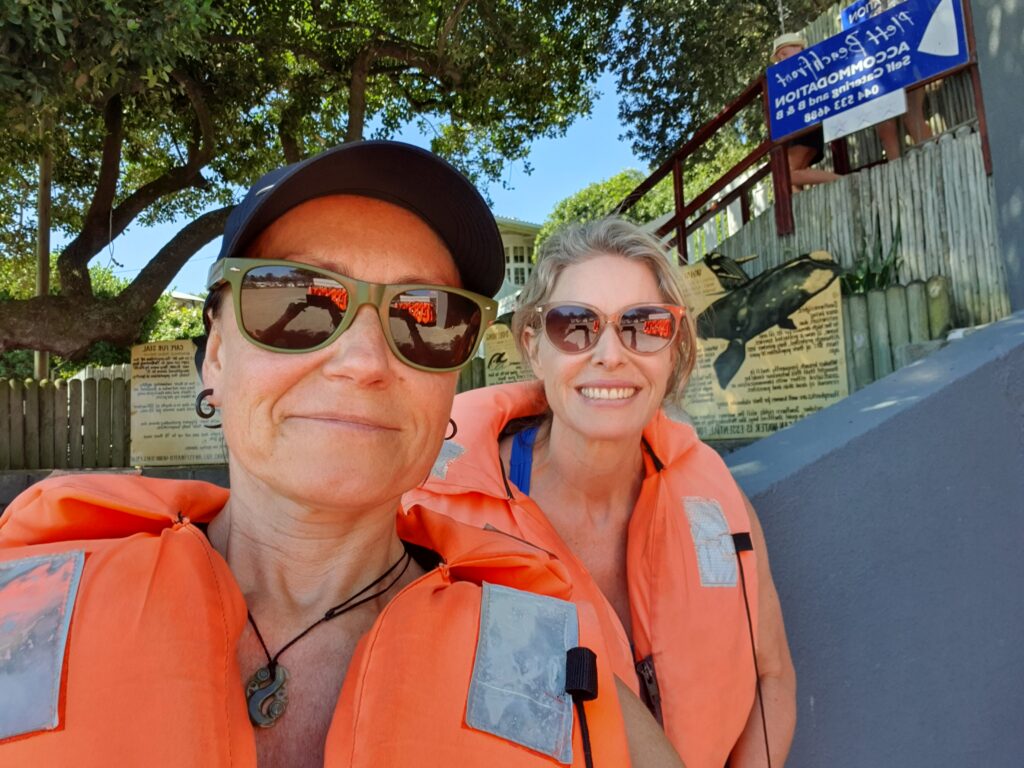
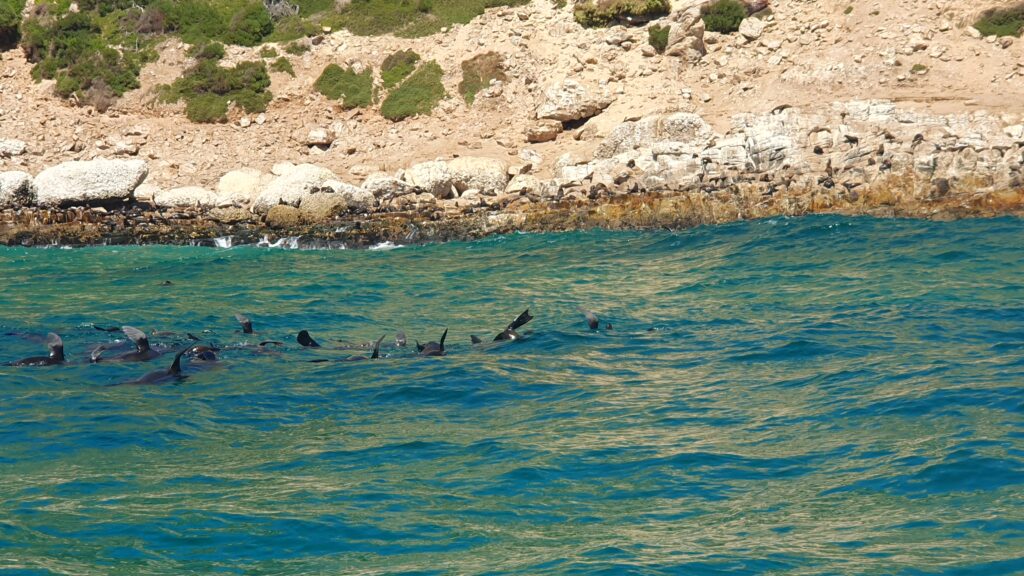
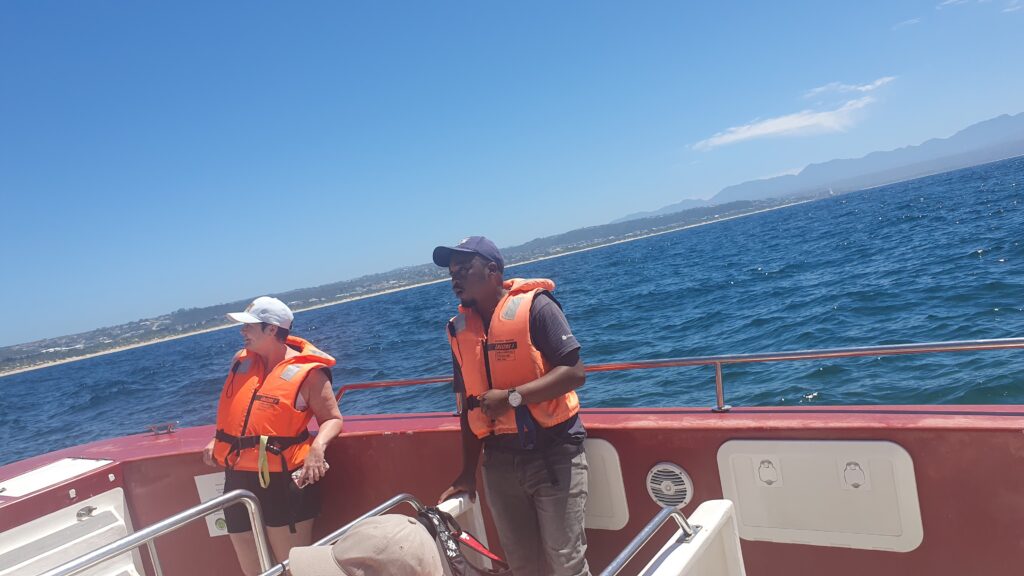
Return to Cape Town
After enjoying morning yoga and a delicious vegan breakfast at the Peace of Eden Nature Lodge, we embarked on our journey back to Cape Town, stopping at charming farm stalls.
Safari Experience at Aquila Private Game Reserve
One of the highlights of our retreat was undoubtedly our visit to the Aquila Private Game Reserve, where we embarked on a thrilling game drive in search of Africa's most iconic wildlife – the Big Five. Witnessing these majestic animals in their natural habitat was a once-in-a-lifetime experience that left us in awe of the beauty and diversity of South Africa's wildlife.
The “Big Five” is a term that is used to refer to the 5 African animals that early big game hunters considered the most difficult and dangerous animals to hunt on foot in Africa. These animals include the African elephant, lion, leopard, Cape buffalo, and rhinoceros.
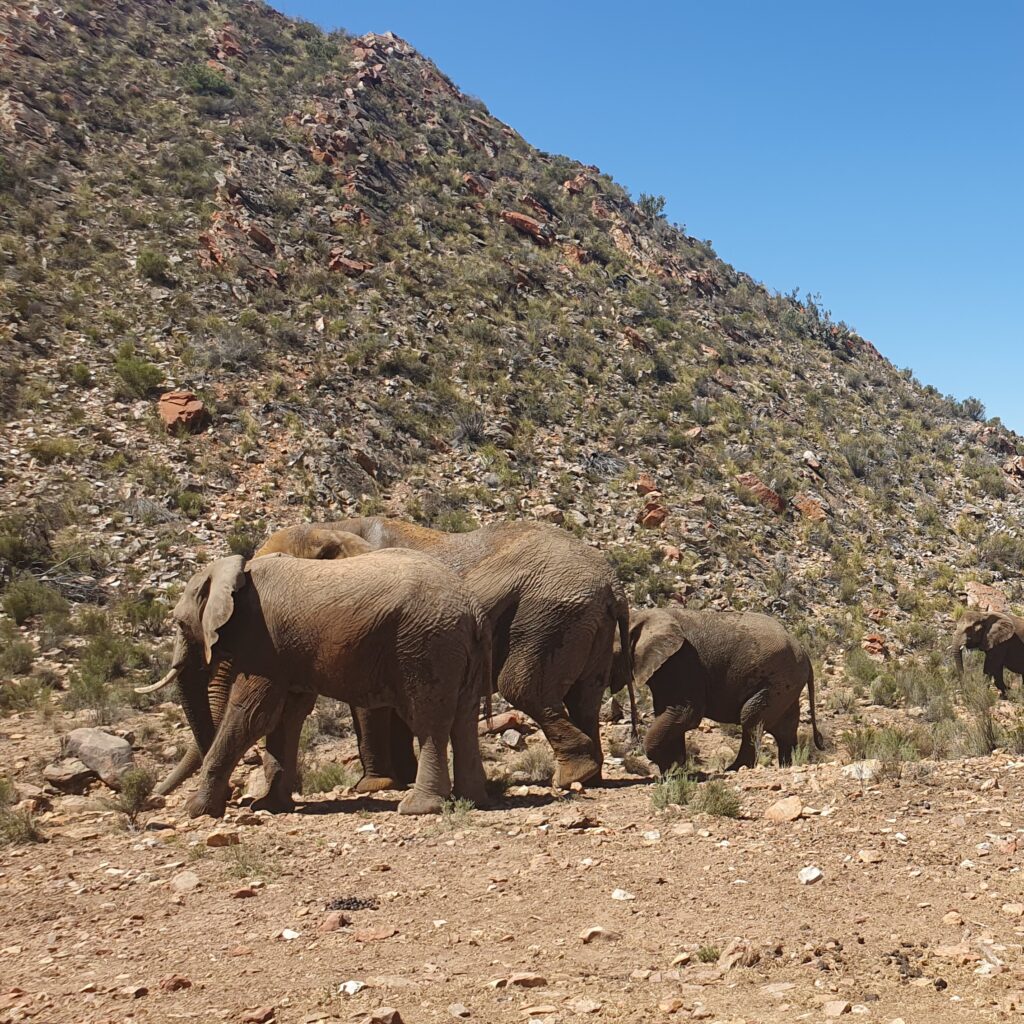
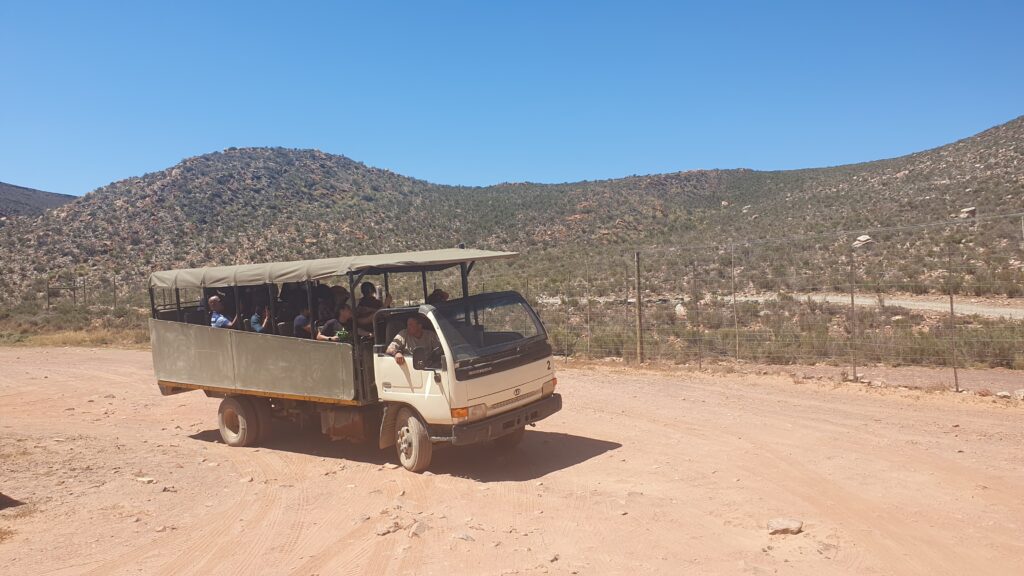
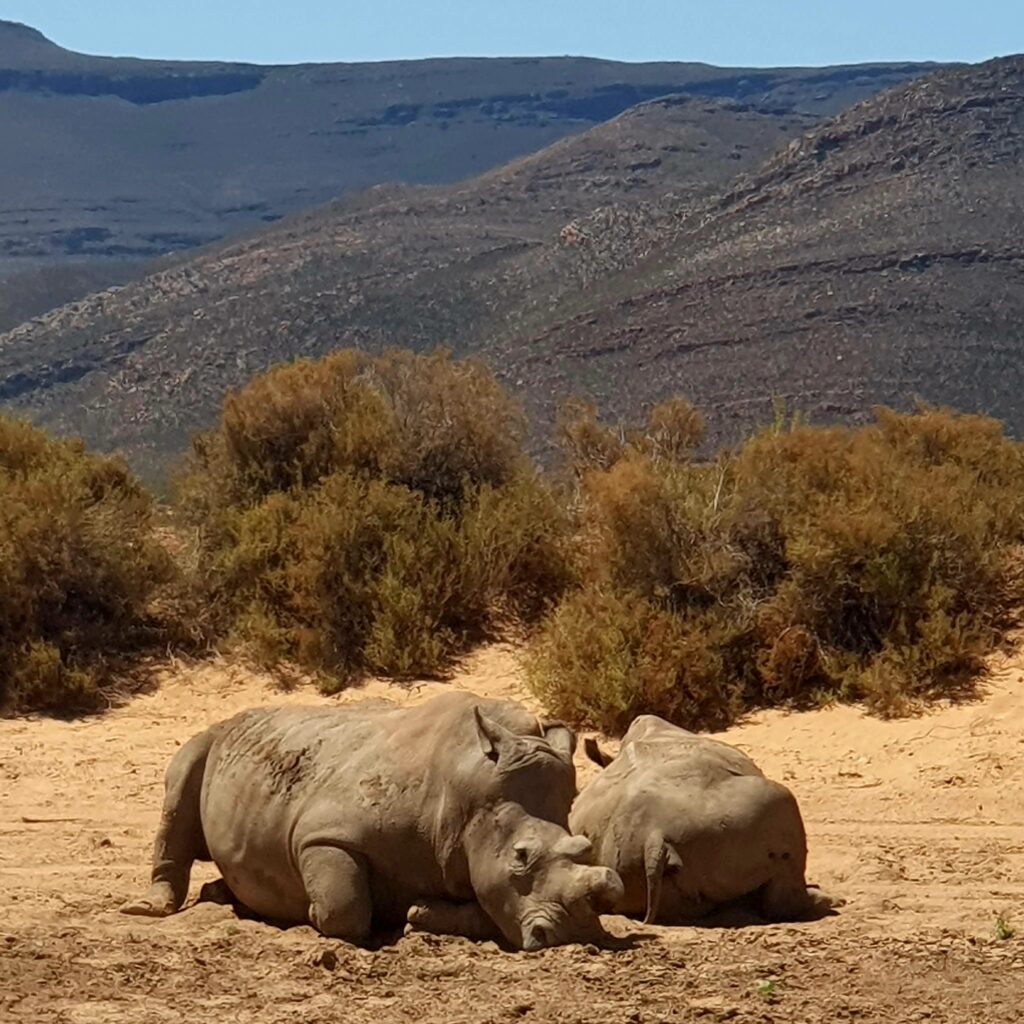
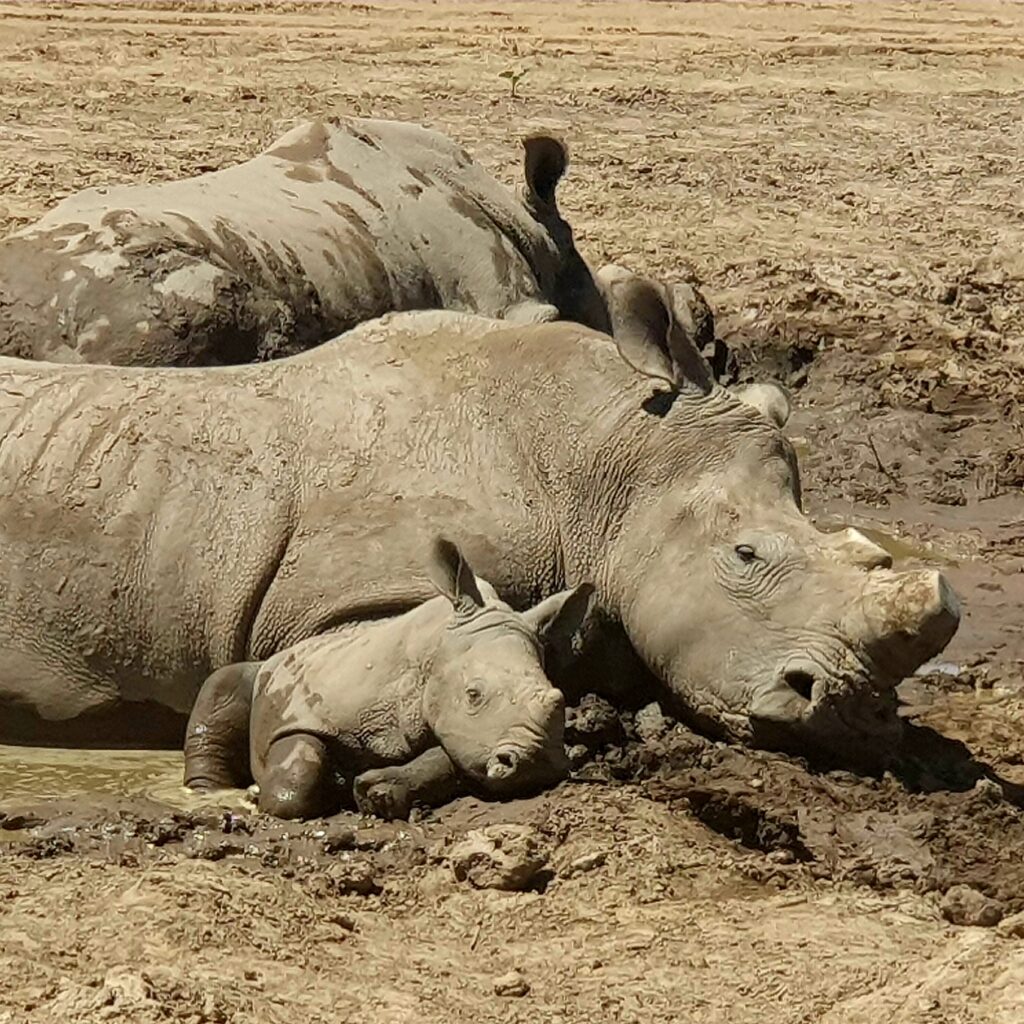
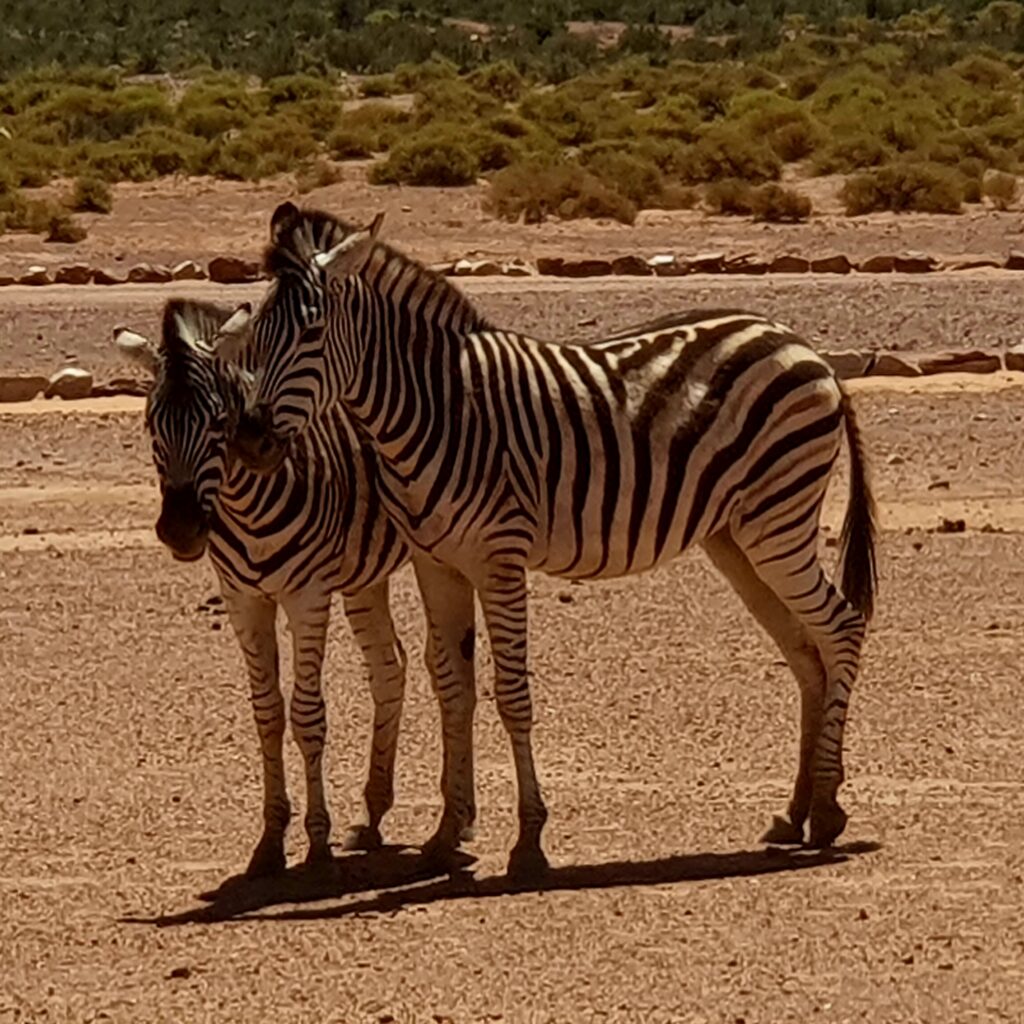

Farwell and Departure: Returning Home After an Unforgettable Yoga Retreat
As we reminisced about our journey, we couldn't overlook the delectable culinary delights that South Africa had to offer. From savoring traditional dishes bursting with flavor to indulging in gourmet meals prepared with fresh, locally sourced ingredients, our taste buds were treated to a symphony of tastes and textures that tantalized the senses. Whether it was sampling hearty barbecues under the African sky or sipping on rich, velvety wines from the renowned vineyards of Stellenbosch, each meal was a celebration of South Africa's rich culinary heritage. The diverse influences of African, Dutch, Indian, and Malay cuisines created a vibrant tapestry of flavors that delighted our palates and left us craving for more.
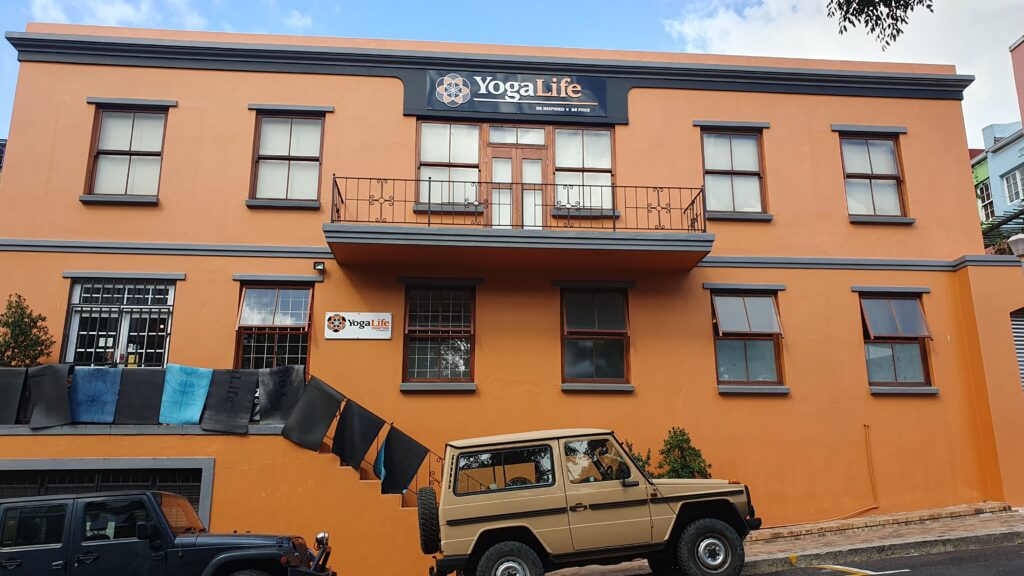
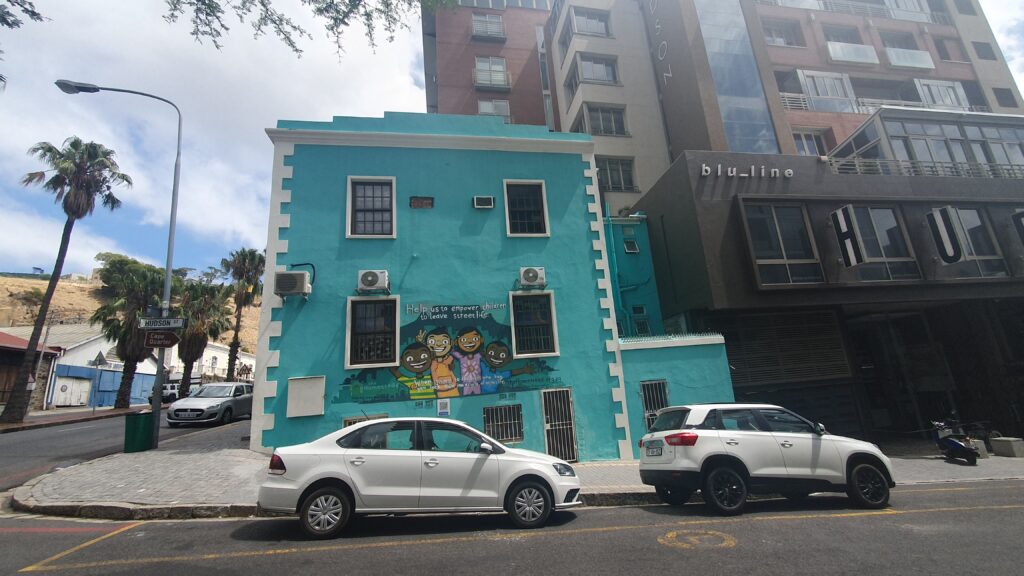
As the sun set on our final day in South Africa, we reflected on the incredible journey we had embarked upon together, from the breathtaking vistas atop Table Mountain to the serene moments of yoga amidst nature's beauty. Each experience had left an indelible mark on our hearts and minds, filling our time together with laughter, adventure, and profound connections, forging bonds that would last a lifetime.
As we bid farewell to the vibrant landscapes and warm hospitality of South Africa, we carried with us memories that would continue to inspire and uplift us long after our journey had come to an end. Though our paths may diverge, the spirit of our yoga retreat will forever unite us in a shared sense of gratitude, wonder, and the enduring power of exploration.
Discover more yoga retreats here.
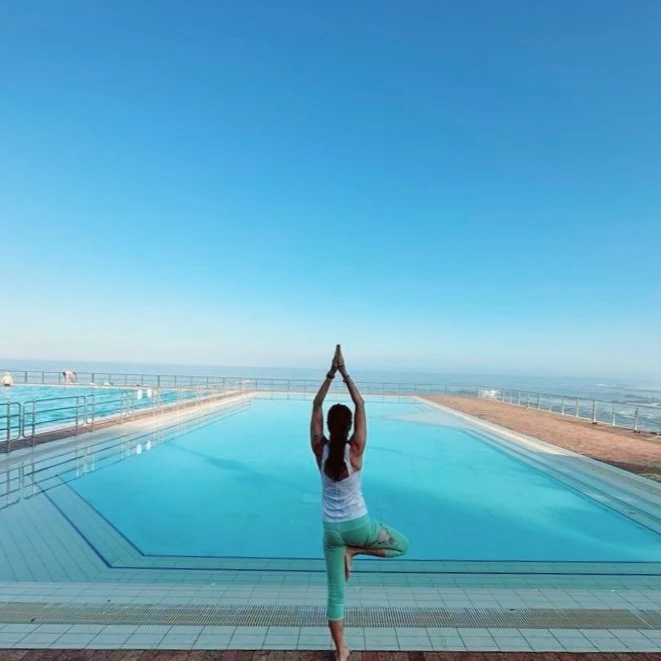
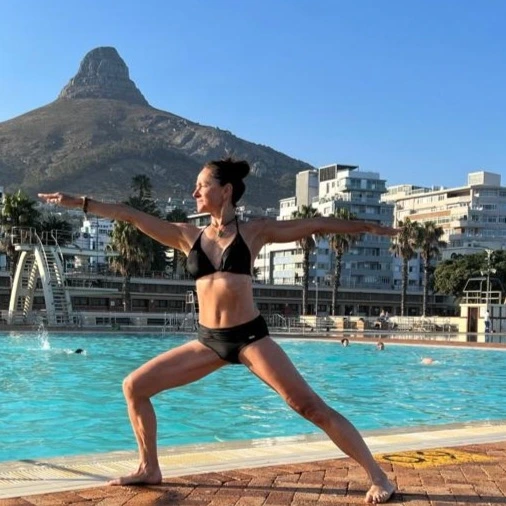
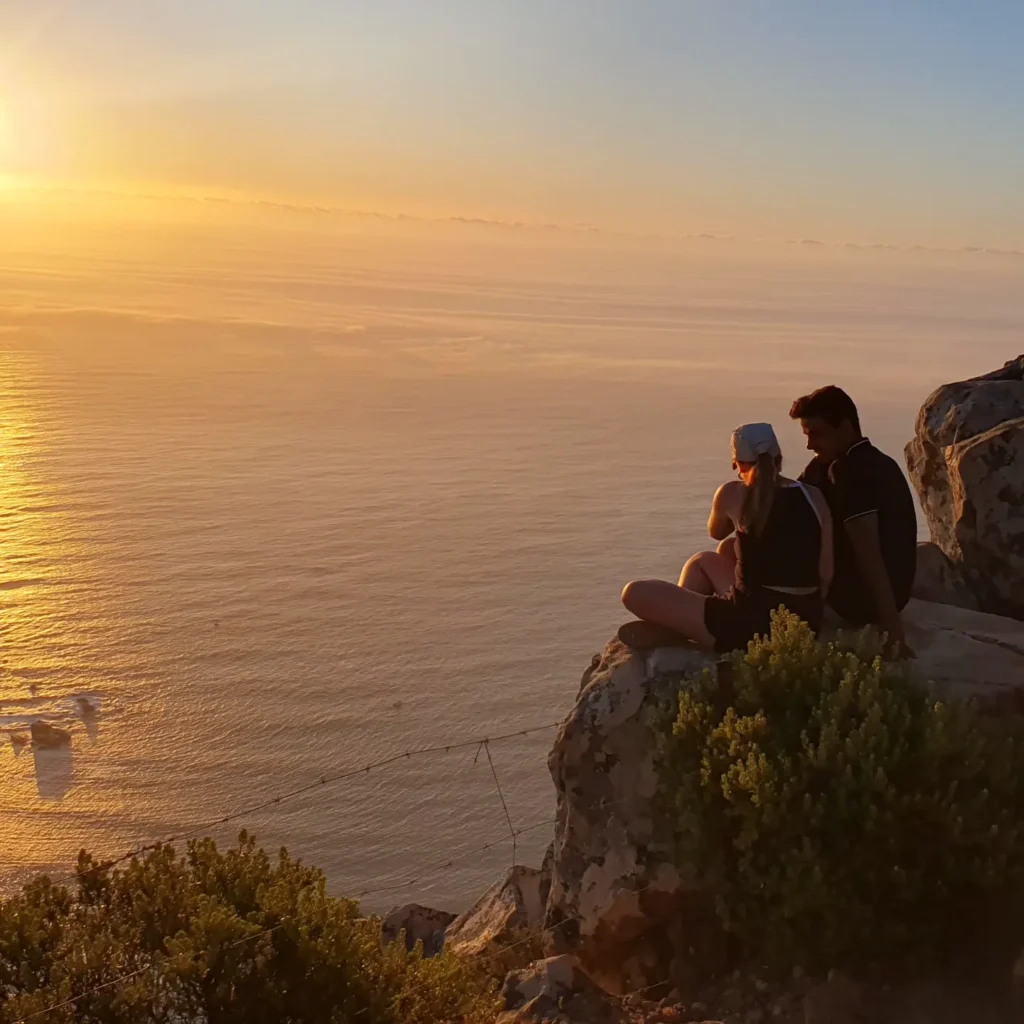
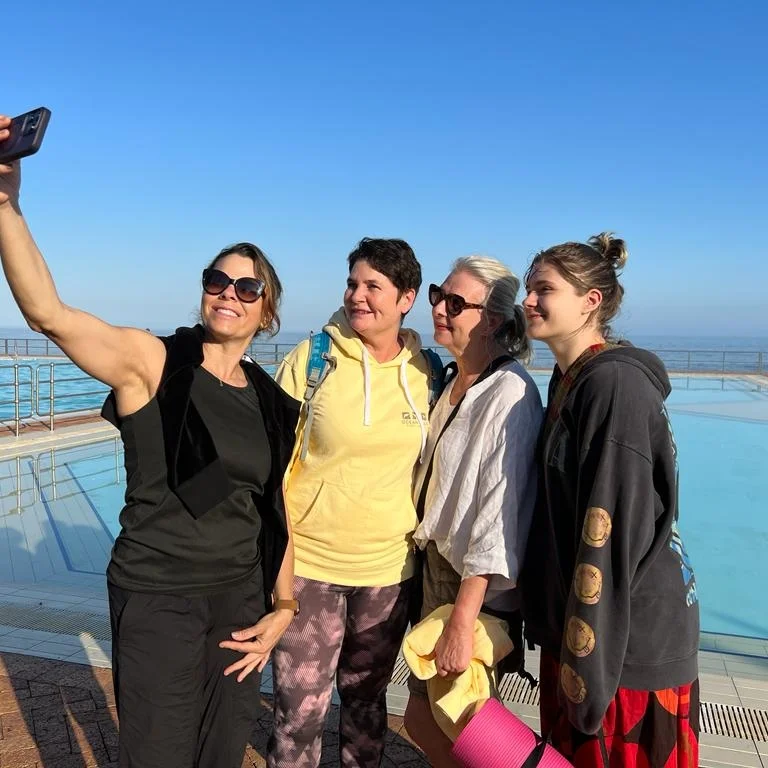
In the summer of 2022, the first yoga and pilates teacher training will take place in Molde, Norway.
This Yoga and Pilates teacher training welcomes students who want to deepen their understanding of these two practices. Anyone who loves movement can learn and grow through this intensive 250-hour teacher training. Students may attend any of the three modules; both yoga teacher trainings are required to be eligible for registration with Yoga Alliance. Personal trainers, yoga practitioners, teachers, Pilates instructors, physiotherapists, and group fitness trainers, especially Les Mills Bodybalance and Bodyflow instructors will be able to enhance their personal practice and incorporate techniques they learn so they can teach a variety of classes without injury. The entire 250-hour teacher training is appropriate for beginners as well as intermediate and advanced students.
The 200-hour yoga teacher training will give a basic overview of different styles of yoga; as well as introducing the philosophy, and history of different styles. It will also prepare students to teach basic yoga poses and design around basic themes.
The Pilates module will teach the 50 preparation Pilates exercise and 34 original Pilates mat exercises in the correct order.
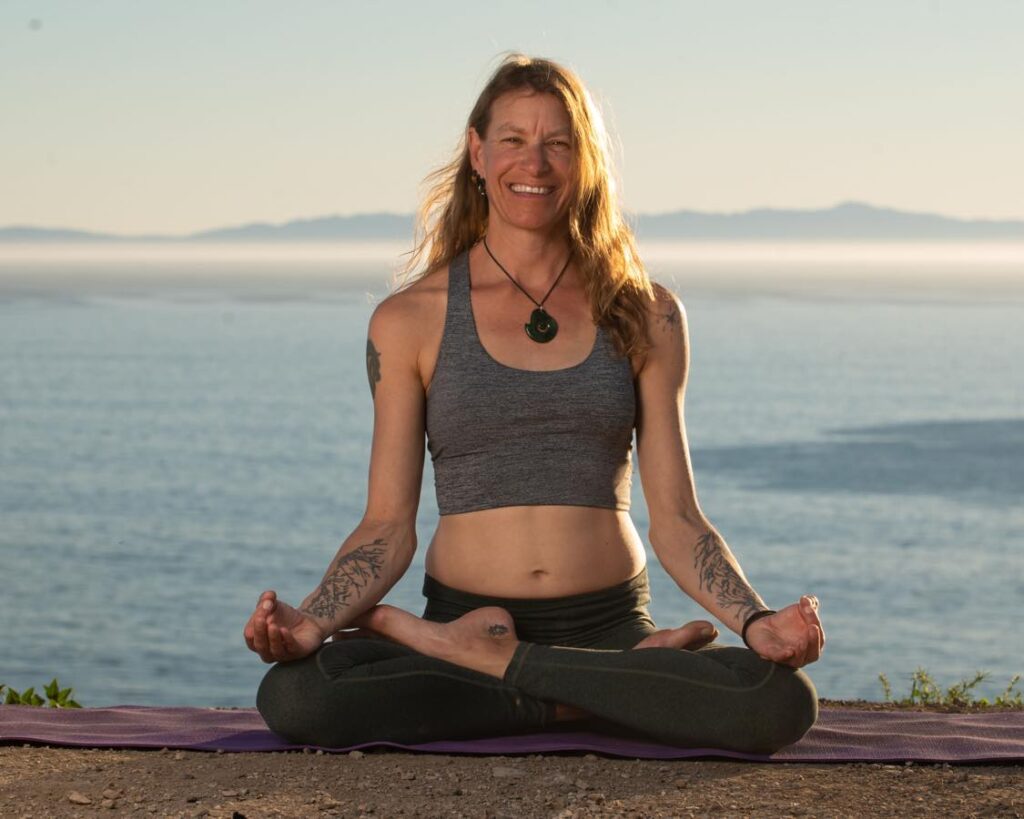
What is Yoga? And what is Pilates?
Yoga uses the body to connect with the mind and the inner self, while pilates uses mindfulness to connect to the inner workings of the body.
Yoga
Yoga was created in India thousands of years ago to connect the individual consciousness with the universal consciousness through physical activity. In short, it aims to not only improve your physical health but your emotional and spiritual health as well. Through repetitive movement, the act of yoga can be extremely therapeutic. In addition to being therapeutic, these movements focus on building flexibility and strength. Many types of yoga involve meditation at some point during the exercise. The meditative portion of yoga tends to attract people who are seeking to unwind from stressful situations.
Yoga is an integrated health management system using breath, movement, and meditation to unite the mind, body, and spirit. It also incorporates elements of philosophy, science, and an ethical way of living.
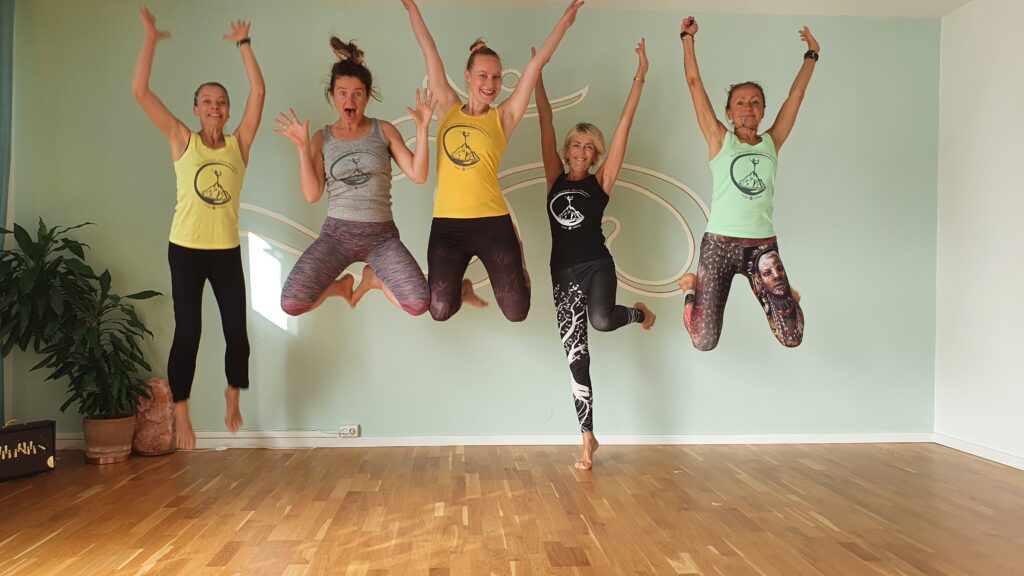
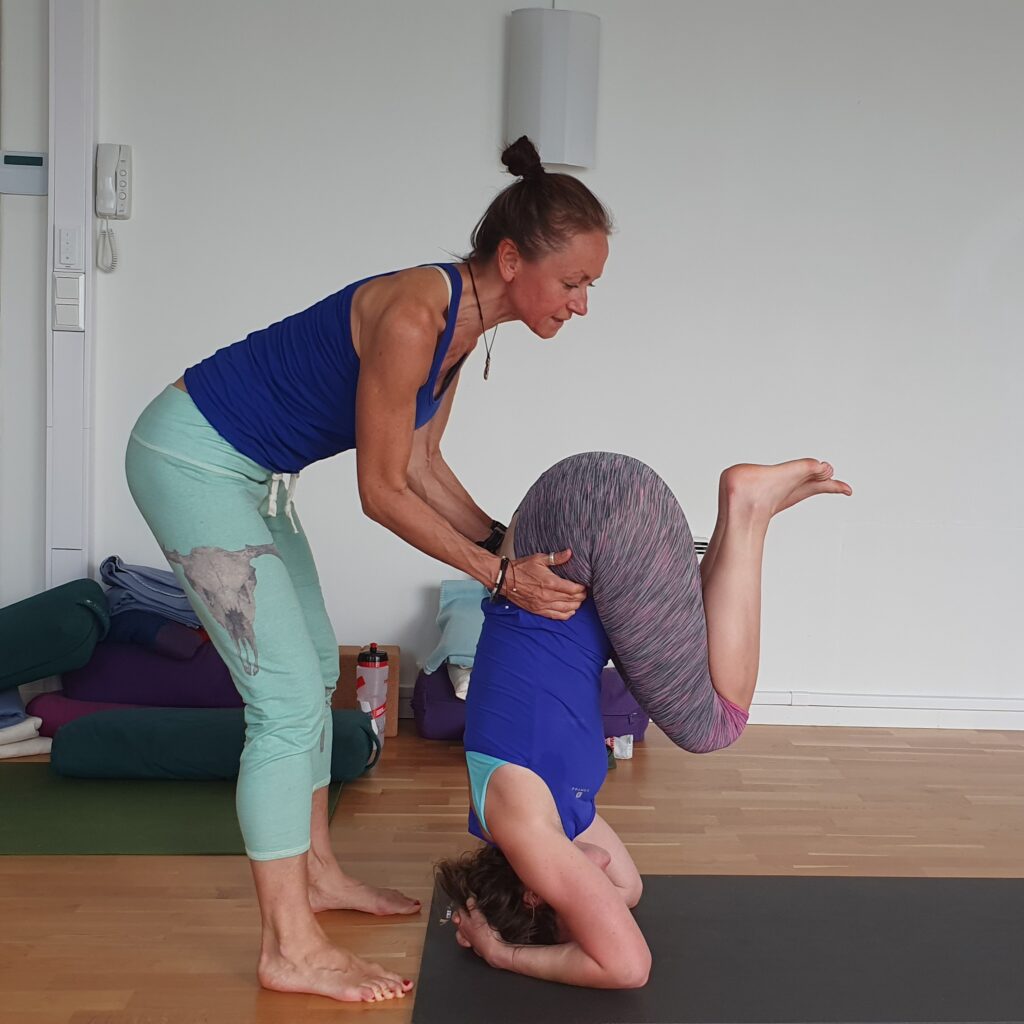
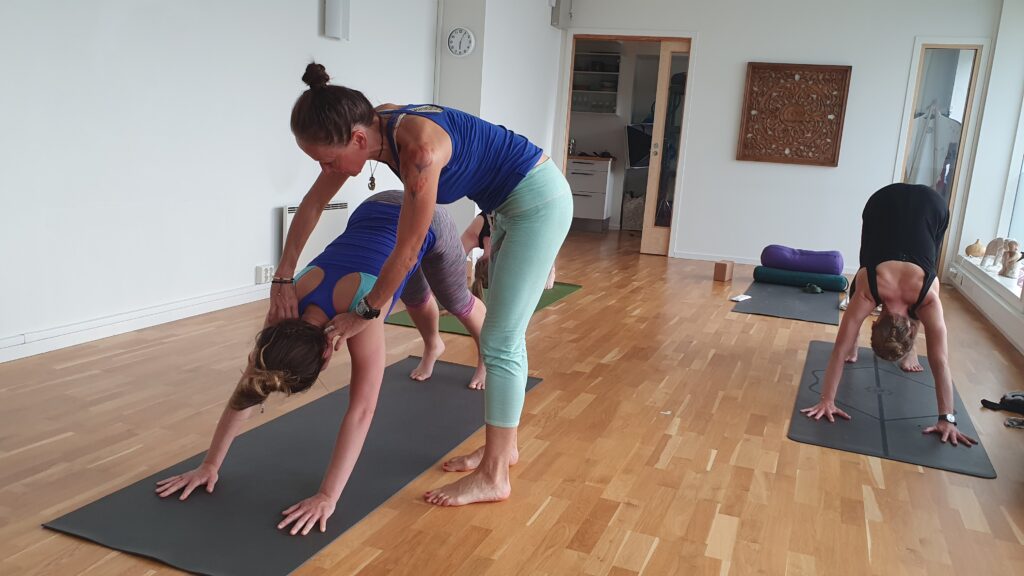
Pilates
Pilates was created in 1920 by German, Joseph Pilates for physical rehabilitation. Pilates aims to increase flexibility, strength, and body awareness. It is considered a resistance exercise, even though, as a beginner, you may experience an increased heart rate. Pilates has a full mat routine, in addition to exercises that can only be performed on specific Pilates machines, such as the reformer and the Cadillac.
The main goal of Pilates is to strengthen the core, improve posture, stabilize and elongate the spine and develop balance and overall strength.
Pilates works from the center of your body outward. It increases body awareness and core strength resulting in a more resilient body. Pilates is excellent for injury management. The gentle supportive movements are particularly useful for an aging population.
Yoga and eastern philosophy inspired much of Joseph Pilates’s technique. In his book Pilates’ Return to Life Through Contrology, he wrote that age is gauged not by years but by the suppleness of the spine. He also noted that full, deep breathing is a key component to efficient movement. And a stint on any Pilates mat reveals similarities between Pilates exercises and yoga asanas: Side Lift is much like Vasisthasana (Side Plank Pose), Roll Over is reminiscent of Halasana (Plow Pose), and Swimming could be mistaken for Salabhasana (Locust Pose).
Pilates’s focus on building and engaging a strong core can propel one’s yoga practice into new realms. This set of exercises can help yogis get stronger, avoid injury, and sometimes advance into poses that they hadn't previously thought possible.
Pilates Helps Yogis Engage Their Core!
This teacher training combines Pilates with yoga to transform your body and your daily routine.
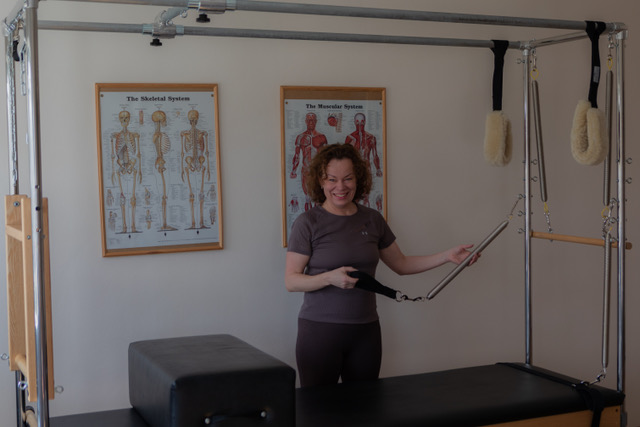
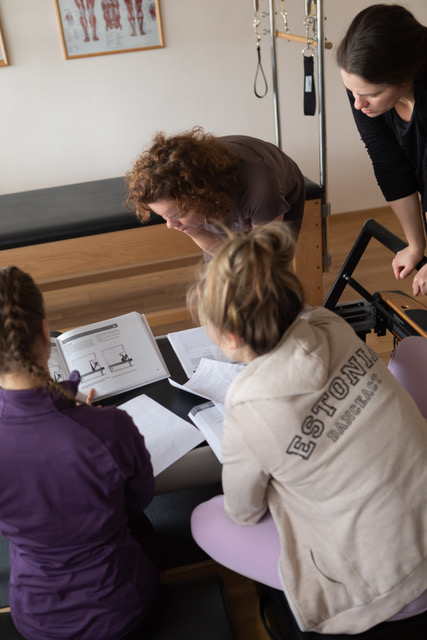
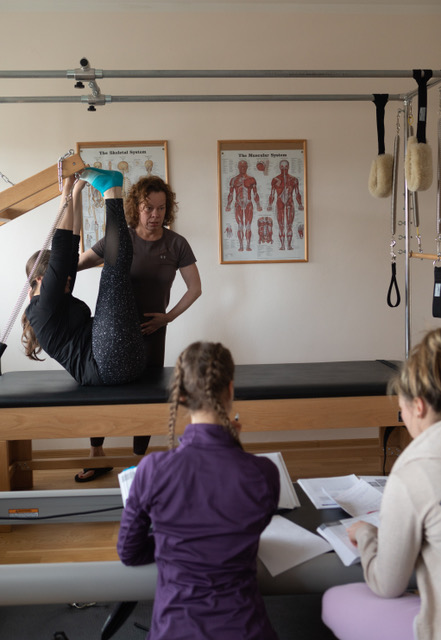
Difference between Yoga and Pilates
Yoga uses the body to connect with the mind and the inner self, while pilates uses mindfulness to connect to the inner workings of the body.
While yogis are instructed to either hold poses or flow through them in vinyasas, Pilates is a rhythmic practice of precise movements repeated five to 10 times for each exercise.
By focusing on targeted movements that develop core strength, Pilates can help yogis build a stable center, lengthen the side body, and increase awareness of alignment. The majority of the focus in Pilates routines is on the body’s powerhouse – the core. Strengthening the core creates stability, which improves balance in yoga poses and allows a student to hold asanas for longer periods of time. Strengthening the core muscles also brings safe alignment into yoga poses. The alignment of the limbs originates in the core. Improving alignment allows us to avoid injury and experience postures more ease. This comfort allows for effective energy channeling making every asana more fulfilling.
Although Pilates brings an intense focus to particular parts of the body – especially the core and the breath – Yoga fosters a deeper connection with all layers of the Self, including the mind. Developing the mind in this way will improve your entire life, as well as their Pilates practice. Students who can connect with each movement are more aware of what occurs throughout their bodies.
Stronger muscles always try and take control, especially if your core is weak. Developing deeper core strength through Pilates brings greater control – control over the center of gravity, movements, and where the tension lives in the body. For example, arm and shoulder strength are commonly overused in Chaturanga Dandasana (Low Plank pose). A stronger core allows the power to originate in the core, improving the asana itself while reducing fatigue, strain, and injury in the upper body.
Where Yoga immerses a student entirely in a full-body routine, Pilates allows them to isolate the body’s specific movement patterns. Many people have trouble understanding what is going on in their bodies. Learning through highly focused methods during Pilates can help people become more knowledgeable about each body part in isolation. For example, gaining an intimate understanding of the shoulder girdle or how the various joints in the hips and lower spine interact will improve your body’s engagement throughout your Yoga classes.
One difference between pilates and yoga is the ultimate goal. Yoga provides a meditative environment for you to improve your overall quality of life. It focuses on stress relief while improving your body.
Yoga concentrates mostly on large, functional movement patterns increasing the overall strength and flexibility of the spine and limbs.
In Yoga, the primary goal is the connection to breathe, using various pranayama techniques. Pilates focuses on building deep core strength first and teaches correct muscle activation, which can help alleviate back pain. Pilates also focuses on breathwork, but unlike yoga, the goal in Pilates is to engage deep abdominal muscles, building core strength and stability.
Pilates is known as a "workout," and yoga as a "practice". However, to improve at anything requires practice, and when practiced well both Pilates and yoga are exceptional workouts.
Yoga and Pilates can work together to strengthen the core, lengthen the side body, and improve your alignment.
We hope, you can join us in Norway from 01-16 June and 01-10 August 2022 to learn how you can combine these techniques to strengthen your personal practice and begin your teaching journey.
Yoga and Pilates Teacher Training in Norway, Molde 2022. More info here.
Yoga retreats are temporary breaks from the daily routine that typically last from the weekend to a week or more. The purpose of a retreat is to allow yogis to deepen their practice without the distractions of life. A yoga retreat is an amazing opportunity to meet others who are passionate about yoga.
Yoga and hiking retreat is a combination of yoga and physical activity outdoors. A retreat starts and ends on a certain date, which means that you will be with the same group of people every day. You go to the same classes, have meals together, and spend a day outdoors hiking together. This gives you the opportunity to actually get to know them and develop a friendship. Yoga and hiking retreat is not just another vacation, it is a powerful experience.
A yoga retreat will help you:
- disconnect and reflect,
- deepen your yoga practice and knowledge,
- step outside of your comfort zone,
- improve your health.
If you are a beginner or not so passionate about yoga, a yoga and hiking retreat will offer you the opportunity to start with regular practice and find out how yoga can help you find balance in your everyday life.
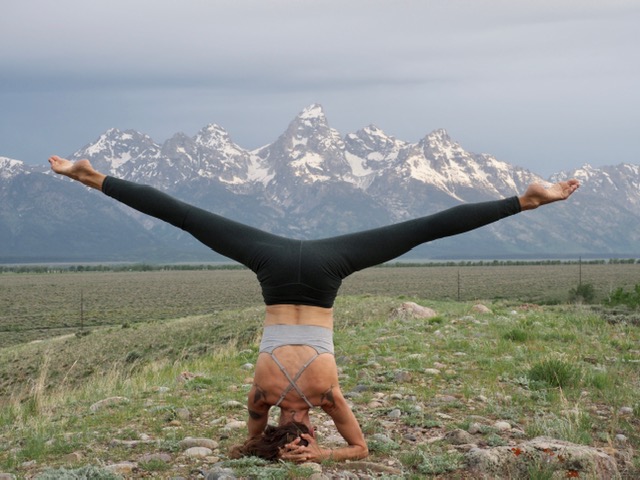
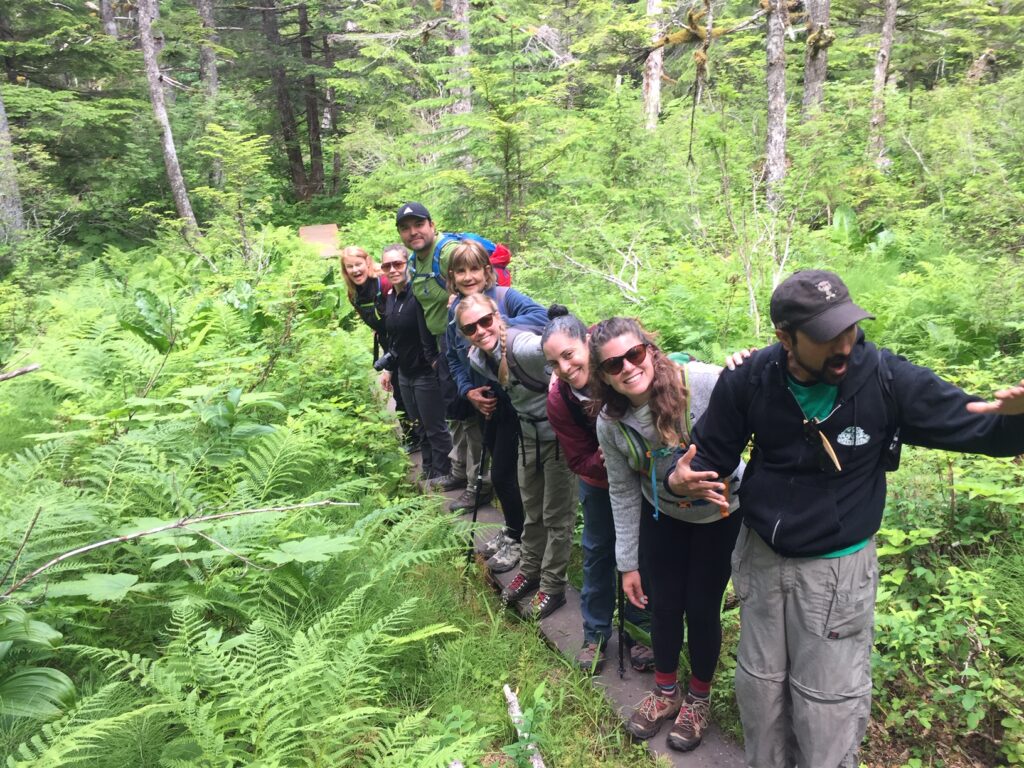

Why yoga and hiking retreat?
"Going back to nature is going back to the origin of life, to the origins of ourselves." This is what the philosopher Henry David Thoreau said about connecting to your inner self. There is plenty of time for self-reflection during the long hours of walking. We will encounter quite some obstacles, being far away from home and out of our comfort zone. But we might also realize what truly matters to us in our lives and what the purpose of our lives may be.
The question "Who am I?" is the ultimate question in yoga philosophy. This is exactly why connecting with nature and practicing yoga simultaneously form a perfect combination. Both will help you learn about your true self. The yoga and hiking retreat is a simple way to reconnect with your inner self and understand yourself better.
Read more about our yoga and hiking retreats in Norway.
Hiking versus walking the Camino de Santiago
Walking the Camino de Santiago has been and still is on a bucket list for many people. Yoga and hiking retreat is like walking the Camino but it is a softer version of the Camino way. You know where you are going to sleep every night and you always have wi-fi when you need it. You will also prepare your body for a long day outdoors with morning yoga sessions, stretch and relax your tired muscles every evening and eat healthy and nutritious food during the journey.
However, yoga and hiking will give you many of the Camino walk benefits. Additionally, spending days in the fresh air will prevent you from becoming infected with viruses and will strengthen your immune system.
Top 3 reasons why people walk the Camino de Santiago
Camino de Santiago, known in English as the way of St. James, is a network of pilgrims' ways or pilgrimages leading to the shrine of the apostle Saint James the Great in the cathedral of Santiago de Compostela in Galicia in Spain.
Spiritual reasons
Many pilgrims walk to connect and discover the deeper meaning of life, to spiritually connect with nature or themselves, or walk to find answers to deep questions.
Disconnect to reconnect
In a world of busyness with too many obligations and long workdays, many of us have become disconnected and disillusioned. We all say we would like to disconnect a bit but typical vacations are anything but answering e-mails at the pool and watching or reading the news after dinner, we seem never to have the opportunity to truly "get away from it all". At first, it may seem strange to not constantly think about what is going on in your country or not check your phone every 15 minutes but soon you find peace and silence in the journey. It takes a few days to adjust but the reward is clarity and a feeling of peace.
Exercise and well-being
The majority of people have little to no experience in walking long distances over many days. A popular saying is "your Camino begins when you sign up". You begin to research what shoes to bring, how to train and prepare your body, and what you should pack. Many people start training, to become healthier and more fit for the trip.
Hiking in Estonia -visiting mysterious bogs
Estonian bogs have gone through a large-scale transformation from being seen as a horrific place to becoming one of the most loved landscapes. Our bogs are the top-of-the-list attraction for every tourist willing to discover the Estonian countryside and wildlife.
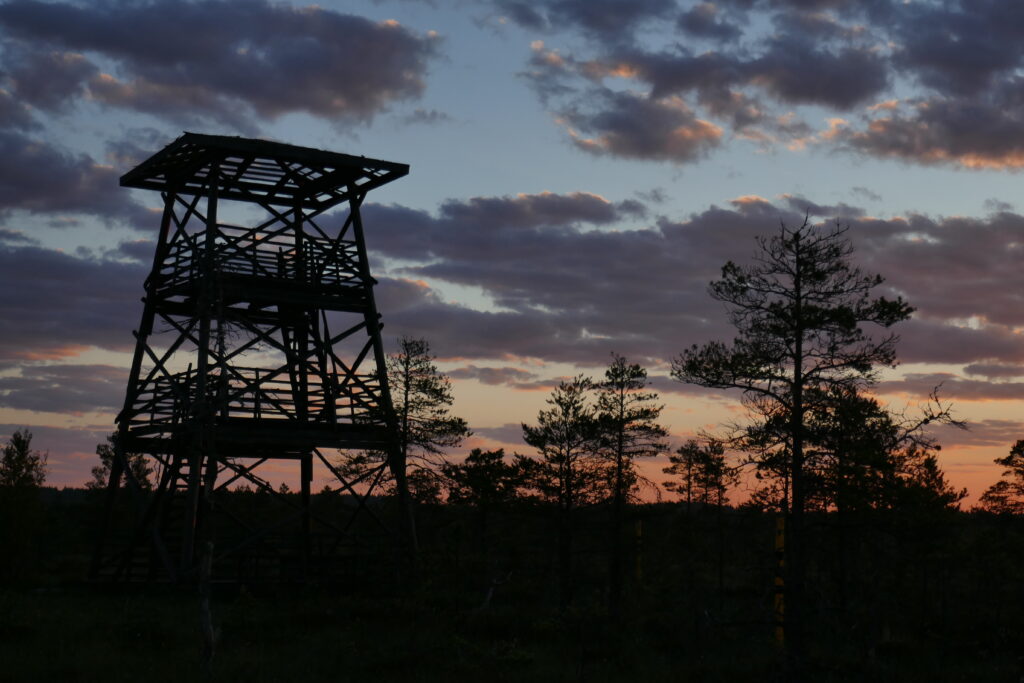
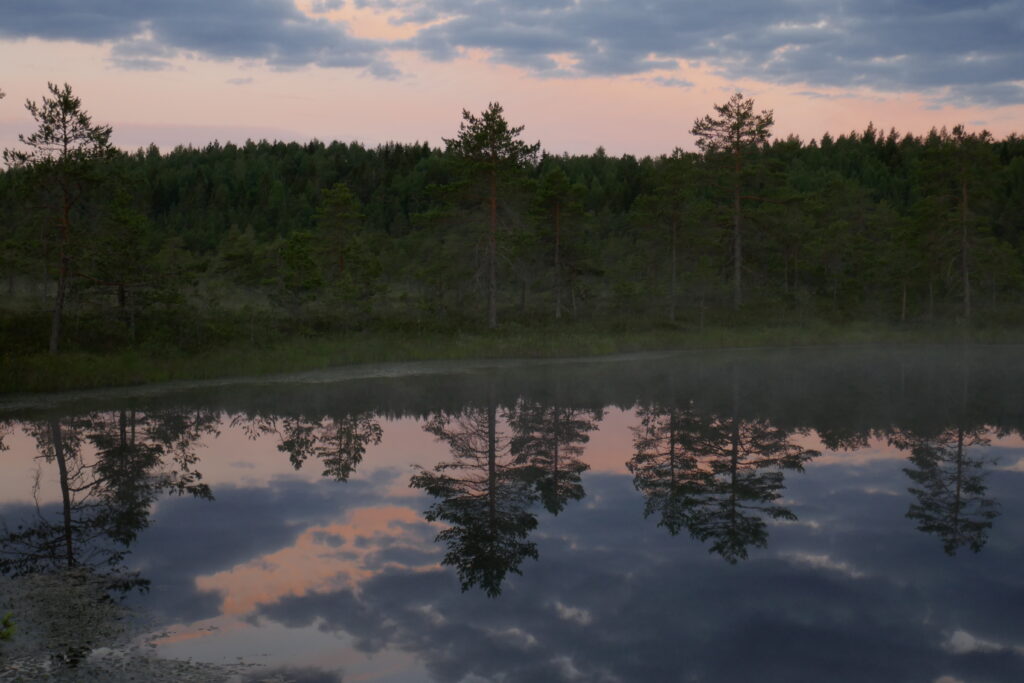
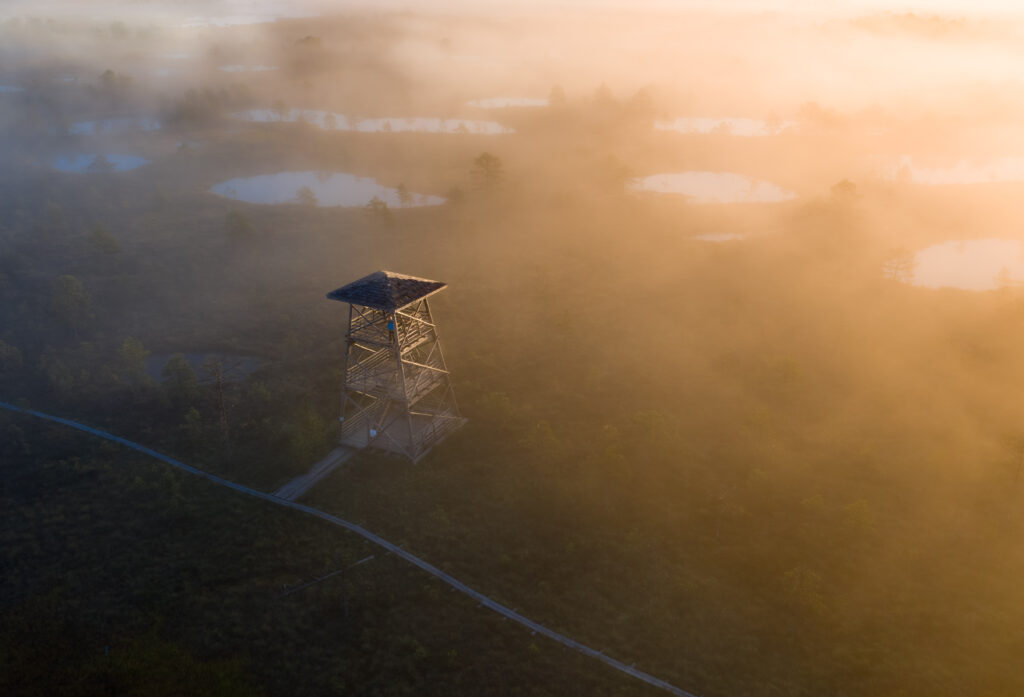
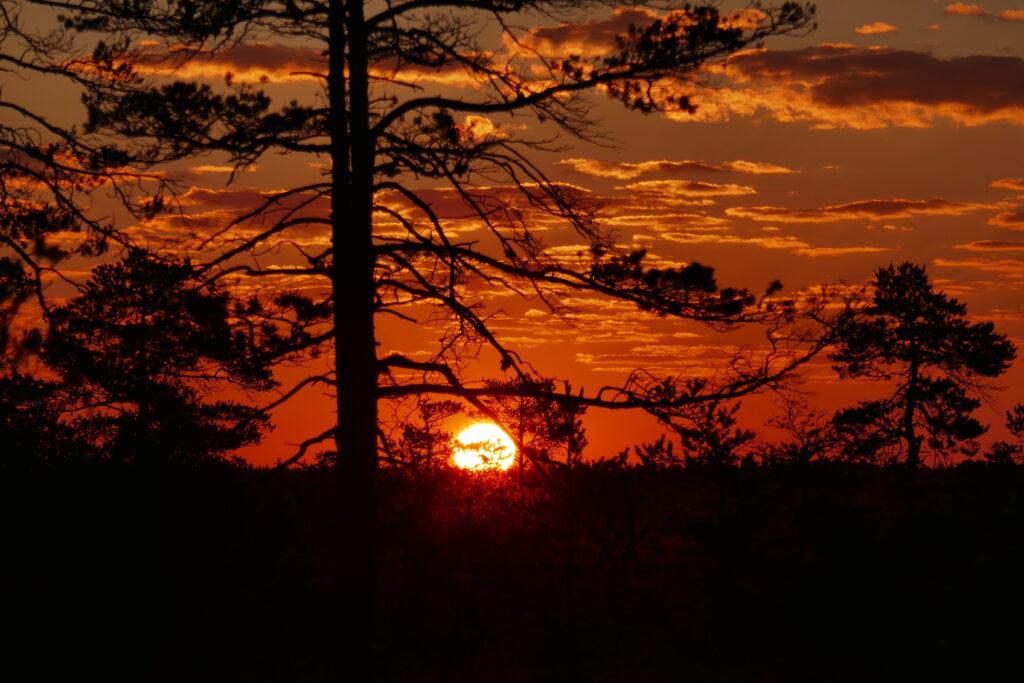
What is bog?
The bog is the oldest organic landscape in Estonia, reaching in some cases up to 10 000 years of age. The first bogs started to emerge here right after the last ice age. As the 1km, the thick glacier ice sheet was melting towards the North pole, the meltwater as a leftover was collected in depressions previously created by the glacier ice.
Over the next thousands of years, plants grew and died within those shallow and oxygen-deprived meltwater lakes. As a result, the dead plant material didn’t become decomposed but rather created ever-lasting peat/turf and turned the water acidic. Every year, one layer of partially decomposed organic material is accumulated underneath the mossy surface of the bog and this effect has taken place since the very beginning!
In Estonian bogs, the pace at which the peat accumulates is roughly 1mm annually. In most Estonian bogs, the peat layer is 5-7 meters on average, which equals about 5000-7000 years of age. Over the course of thousands of years, this landscape goes through a series of transformations. At the very beginning, this peat accumulation landscape does not have a significant effect on plants – the peat layer is just too thin and flora is able to reach the nutrient-rich groundwater. After millennia or two, the peat layer becomes thicker and filters out more demanding plants. The visual of the landscape is about to change. Birch trees will give up and pines will slowly start to take over. This middle stage is called transitional mire.
Later the peat layer gets just so thick that only the toughest plants will survive. The third stage is called bog or raised bog. Here you can see a lot of bog pools or lakes inside this huge organic sponge. The landscape is entirely independent, meaning that the plants don’t have access to nutrient-rich groundwater and all they have is rainwater stored in the ground. Bogs can be seen as huge sponges that can store huge amounts of water. Mainly because the sphagnum moss, also known as the “bog builder plant” is able to absorb almost 20x its body mass. So in some ways, bogs are also giant water reservoirs.
Bog operates as a carbon sink and therefore mitigates the effects of climate change. And as we know today, it’s a perfect place for aesthetic experiences.
Bog as a place to restore yourself mentally and physically
Since the Estonian bogs were “rebranded” decades ago, their popularity has skyrocketed. The State Forestry Agency has built a lot of boardwalks and forest trails to provide easier access to all the people interested in enjoying the silence and minimalistic landscapes.
Suddenly, bogs have become the symbols of our country. 100 years ago it was unheard of to say, think or write anything pleasant about our swamps or bogs. Today, people still have some sort of unconscious “itch” inside them when they get off the trails and feel this spongy ground. But walking on boardwalks has become so popular, that on the weekends you could encounter more people in bog than in a shopping mall. So if interested in peace and silence, you have to choose your destinations carefully.
The best time to visit the bog in Estonia
As you may guess, every season has its pros and cons. Although I see some benefits in visiting bogs in particular time periods, I still think everything depends on your goals. Is it to see wildlife? To swim in a bog lake? To pick berries? To skate on the frozen lakes?
Spring (March-May) is probably the best period to encounter birds and animals. For example, male black grouses are having battles in the bogs at the sunrise. Of course, it’s something that needs preparation and setting up a hide to witness those rare moments. The cranes are arriving from Africa and many birds are stopping by to continue their journey to polar regions. Many plants, including mystical labrador tea, bloom in May-June. I love spring because at that time we don’t have mosquitoes here.
I don’t suggest going to the bog on the hot summer days (nights are ok) – because of the dark ground, it gets really hot and there is nowhere to hide from the direct sunlight + you potentially have to deal with horseflies. In the summer, the best time to go to the bog is right before sunset or sunrise. You will then have the least problems with insects + the view is magical. Especially when the sky is clear. and you can enjoy the water that feels especially warm when the air temperature starts to drop.
August-September-October is perfect! Starry skies, misty mornings. Berries – blueberries, lingonberries, bilberries, cranberries, and cloudberries. Mushrooms! Chanterelles! In the autumn, the mosses covering the ground turn into colorful “carpet” + you’ll see the yellow-red colored trees on the horizon. Perfect time for camping and staying overnight as well.
With winter it can go both ways – you either have snow in Estonia or you don’t. When you do, you can go skating on bog lakes, hike with snowshoes over the frozen lakes, make a fire, camp either in a hammock or in a glamping tent. Catch fish on the ice. Fullmoon hike on glowing white snow? No mosquitoes, no crowded camping sites. Silence!
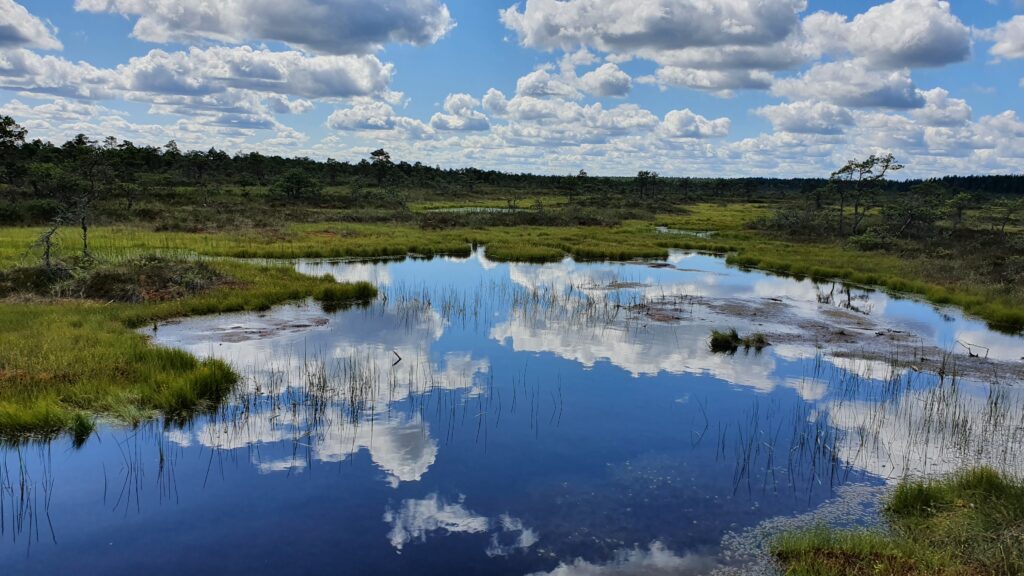
Read more about our Estonian retreat here.
"There is no such thing as bad weather, only bad clothing" - Swedish and Norwegian proverb.
Here I will share some tips on how to choose good hiking clothes and what to wear when hiking to keep you warm, dry, and happy during your adventures in Norway. I will not recommend any specific brands because in different regions you can find similar products from different manufacturers.
Check out our yoga and hiking retreats in Norway, and Nepal.
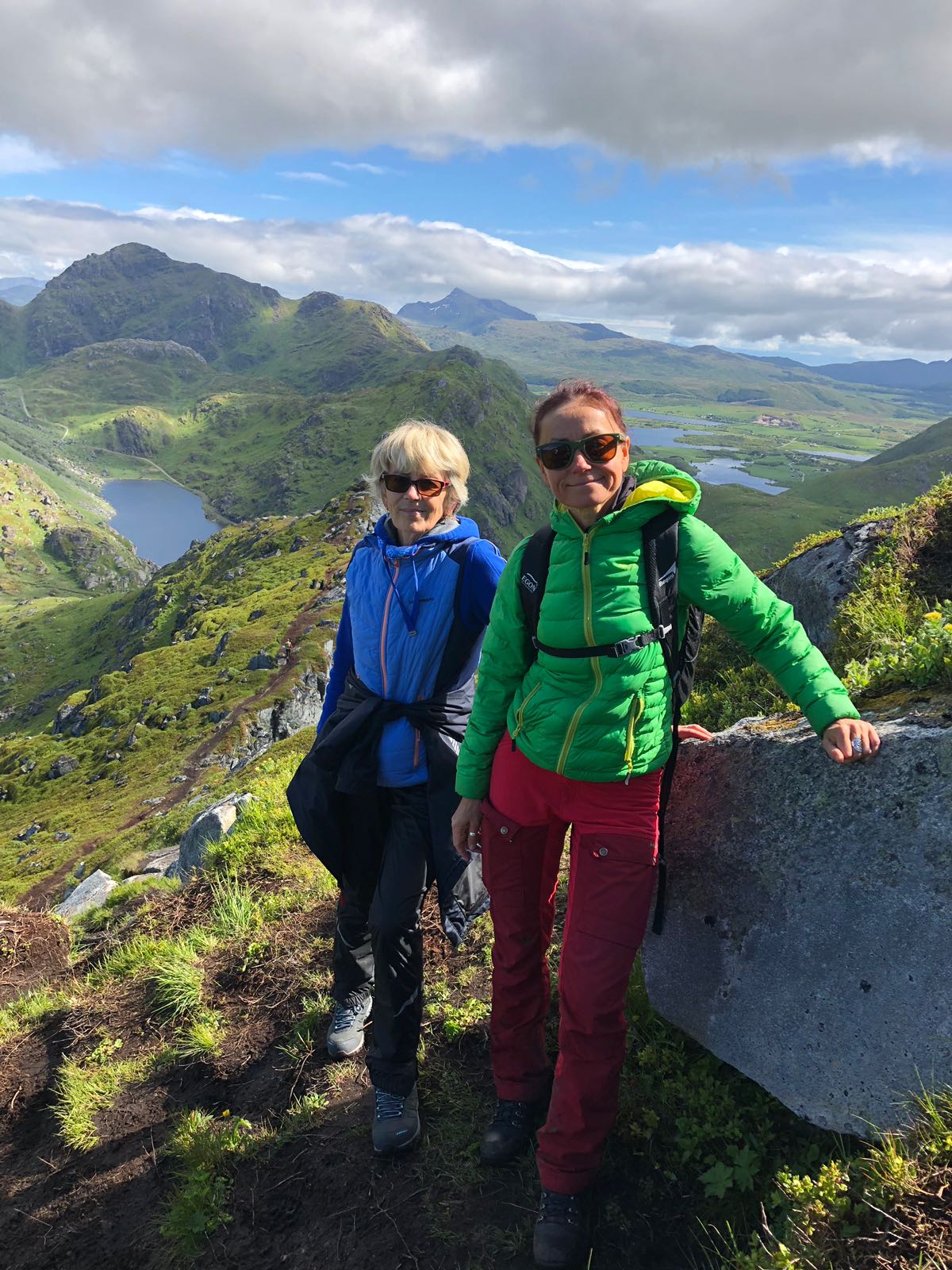
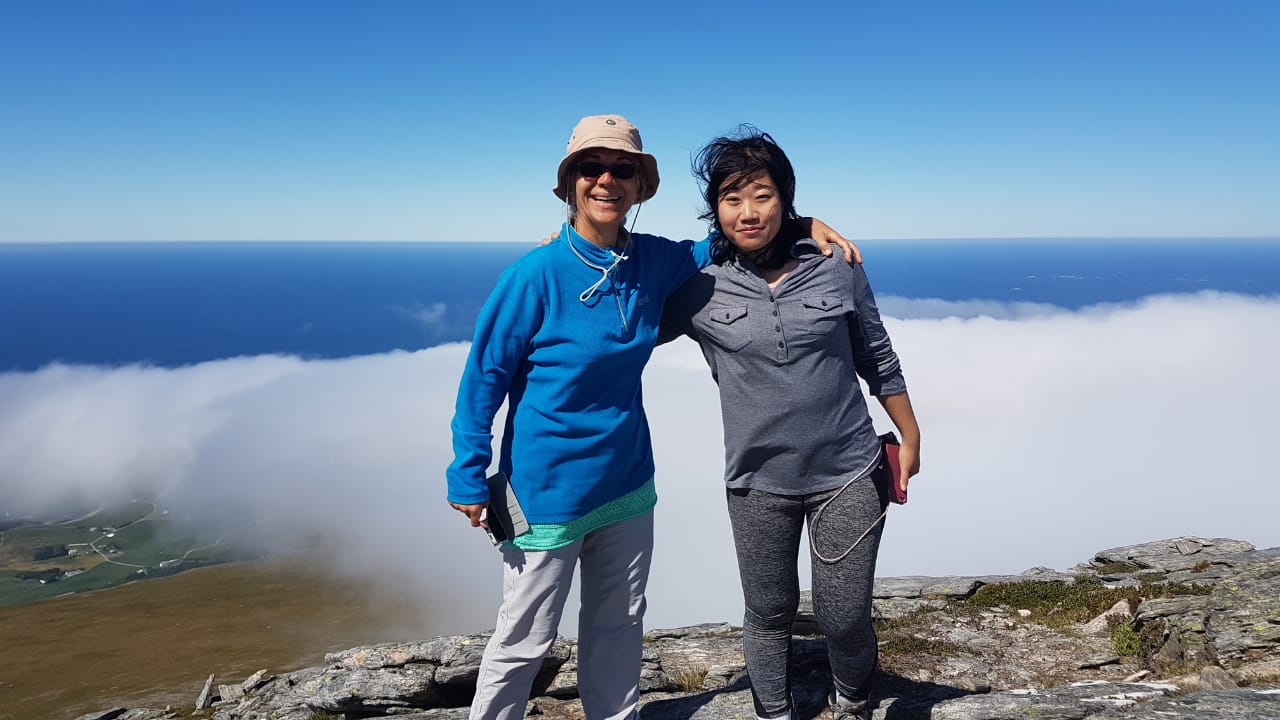
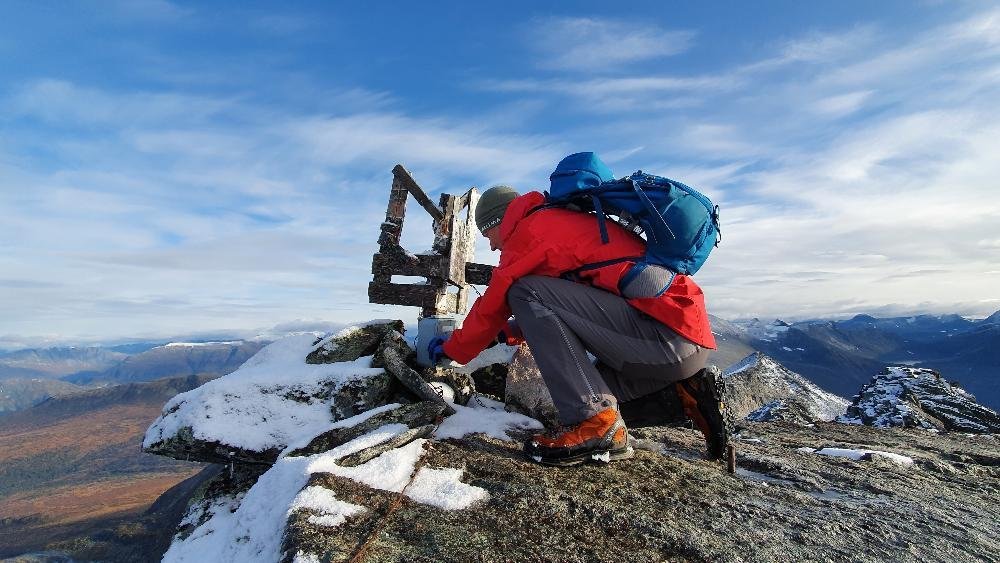
What to wear when hiking in summer-layers, zippers, and pockets
When I moved to Norway in 2013, I started hiking in my jeans, aerobic leggings and top, running shoes, and a light jacket. Although Norwegians thought it was strange (jeans are especially despised), I was not disturbed by it. My hikes were usually short and close to home. With time my hikes became longer and more complicated and I started to buy special hiking equipment. I discovered that the little improvements made a difference! For example, my backpacks got bigger but lighter and I replaced all my pants and jackets with ones that have ventilation zippers.
You start to notice the importance of clothing when you hike for several days in a row, your hike lasts for the whole day, or the weather changes suddenly. When you hike uphill you always get hot and sweaty. The contrast becomes clear when you reach the top of the mountain which is usually windy and cool.
If you want to sit down to eat, relax, and enjoy the view, you instantly feel the cold creeping in. On the way down your legs are already tired so you must take extra care not to stumble and fall. That means hiking at a slow pace with sweaty clothes and rubbing shoes. Suddenly you may find that hiking is not so enjoyable anymore. Fortunately, all this is avoidable when you take advice from experienced hikers.
The most important thing about hiking clothes is layering. This tried-and-true strategy helps you regulate temperature by slipping layers on and off as your activity level or the weather changes. You may not want to wear a lot of layers at the start of your hike but it’s a good idea to take them with you on every outing - you can peel off layers when you get hot but you can’t put on layers that you didn’t bring along.
The base layer should wick sweat off your skin
I am not going to talk about underwear which should be comfortable every day, not only when hiking. But I want to talk about T-shirts. Wool is very popular in Norway: summer wool, merino wool, smart wool, old fashion wool, etc. If I'm honest, I don't go along with fashion trends easily, but buying myself a light, summer merino wool T-shirt was a very good idea.
When hiking with a backpack, your shirt must have sleeves. It is very uncomfortable to feel the backpack strap under a sweaty armpit on a warm summer day. A cotton T-shirt is not the best choice because it dries slowly. I recommend a light wool or synthetic T-shirt for warm weather or a long-sleeved shirt for cooler weather. Choose materials that insulate, wick moisture, and dry quickly.
The same goes for socks. A hiking sock is crucial to prevent blisters. A hiking sock, unlike a cotton sock, provides significant protection against rubbing that your boot might cause. Low-cut socks are not a good choice for hiking, choose crew socks instead.
The middle layer should insulate
Of course, it all depends on the weather but you should always have a long-sleeved sweater or a fleece in your bag. I love fleece hoodies because I always forget my hat at home and they help to keep my head warm. I prefer light hoodies that breathe well. Pullover hoodies might be difficult to put on, so I prefer ones that have zippers.
Down-insulated jackets are my favorites because they are highly compressible and easy to pack in your bag, also down offers more warmth for its weight than any other insulating material.
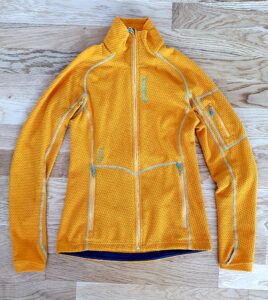


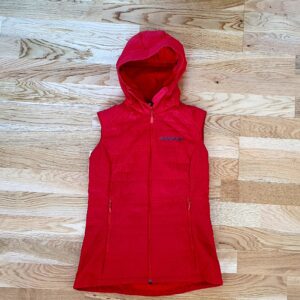
The outer layer should shield you from rain and wind
The outer layer (or shell layer) protects you from wind, rain, and snow. Shells range from pricey mountaineering jackets to simple wind-resistant jackets. Most allow at least some perspiration to escape; virtually all are treated with a durable water-repellent finish to make water beads up and roll off the fabric.
Your outer shell is an important piece in stormy weather because if wind and water are allowed to penetrate to inner layers, you can get really cold. Pit zips under the armpit are again important. The ideal would be lightweight, wind, and waterproof material but usually, if you want significant protection against the rain and wind then you might need to make a trade-off on weight.
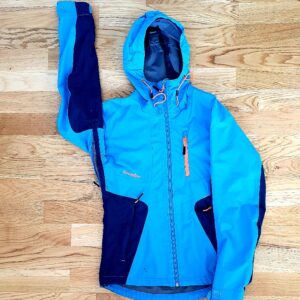
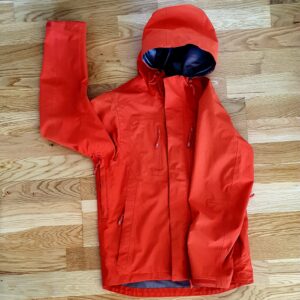
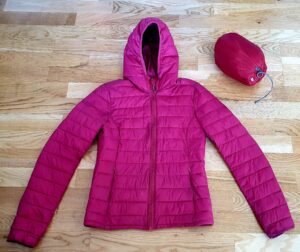
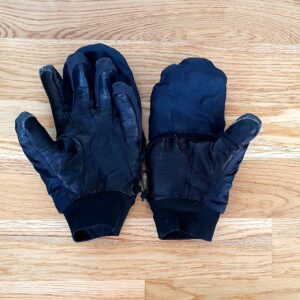
Hiking pants
I think I would love hiking pants that can be turned into shorts by unzipping the long pant legs. Unfortunately, I do not have them yet. But I have several breathable, windproof hiking pants with ventilation zippers and I love them. It is important for me that they also have pockets with zippers - the more the better. Otherwise, my keys, phone, and other things would disappear fast. The material of hiking pants is also crucial. Your pants should be lightweight, soft, stretchy, and windproof. I also have a pair for heavy rain. You mustn't have to take your boots off when you pull on your rain pants. That means a zipper on the side of the pants.
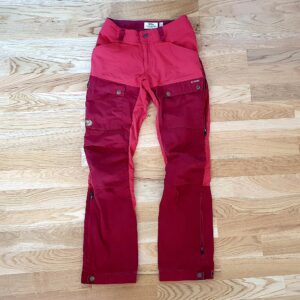
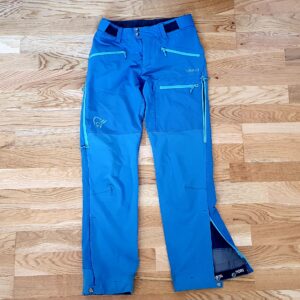

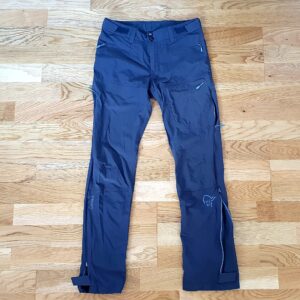
Hiking boots or shoes
One of the most important things you wear on the trail is shoes. Low-cut models with flexible midsoles are excellent for hiking on a warm summer day. I prefer lightweight, flexible, mid or high-cut hiking boots with a good grip. My boots are not 100% waterproof but they are water-resistant. Always wear your new shoes at home or on short hikes before going out on longer hikes. After hiking remove the insoles of the shoes and clean them properly. Remember to also reapply for a DWR treatment every once in a while.
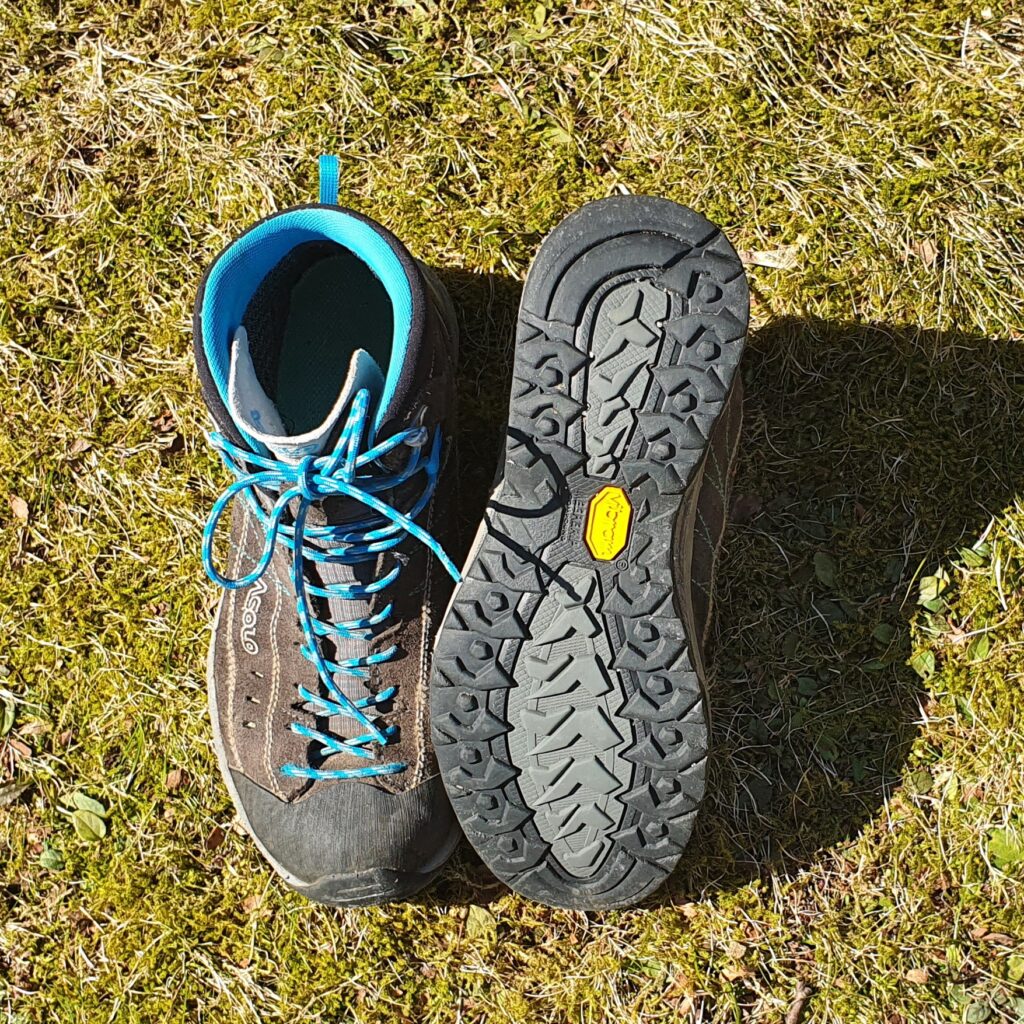
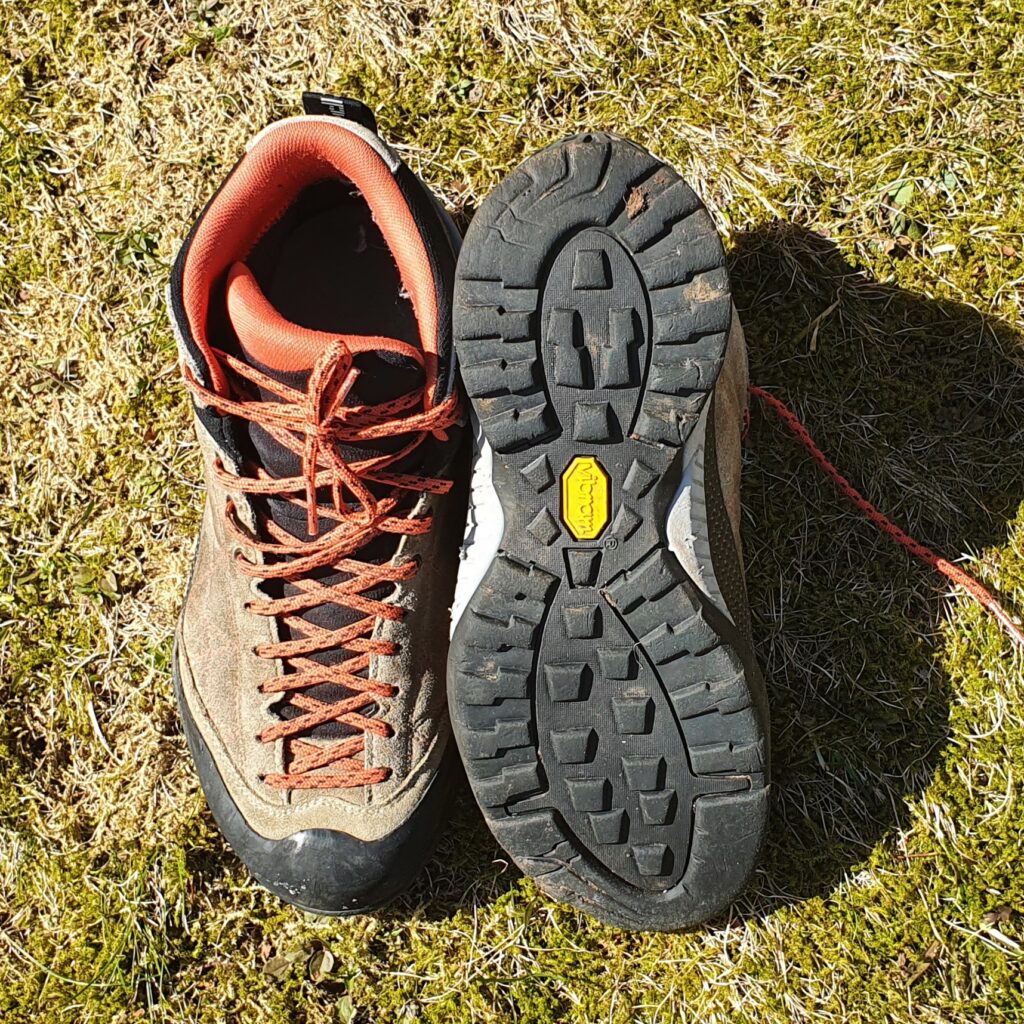
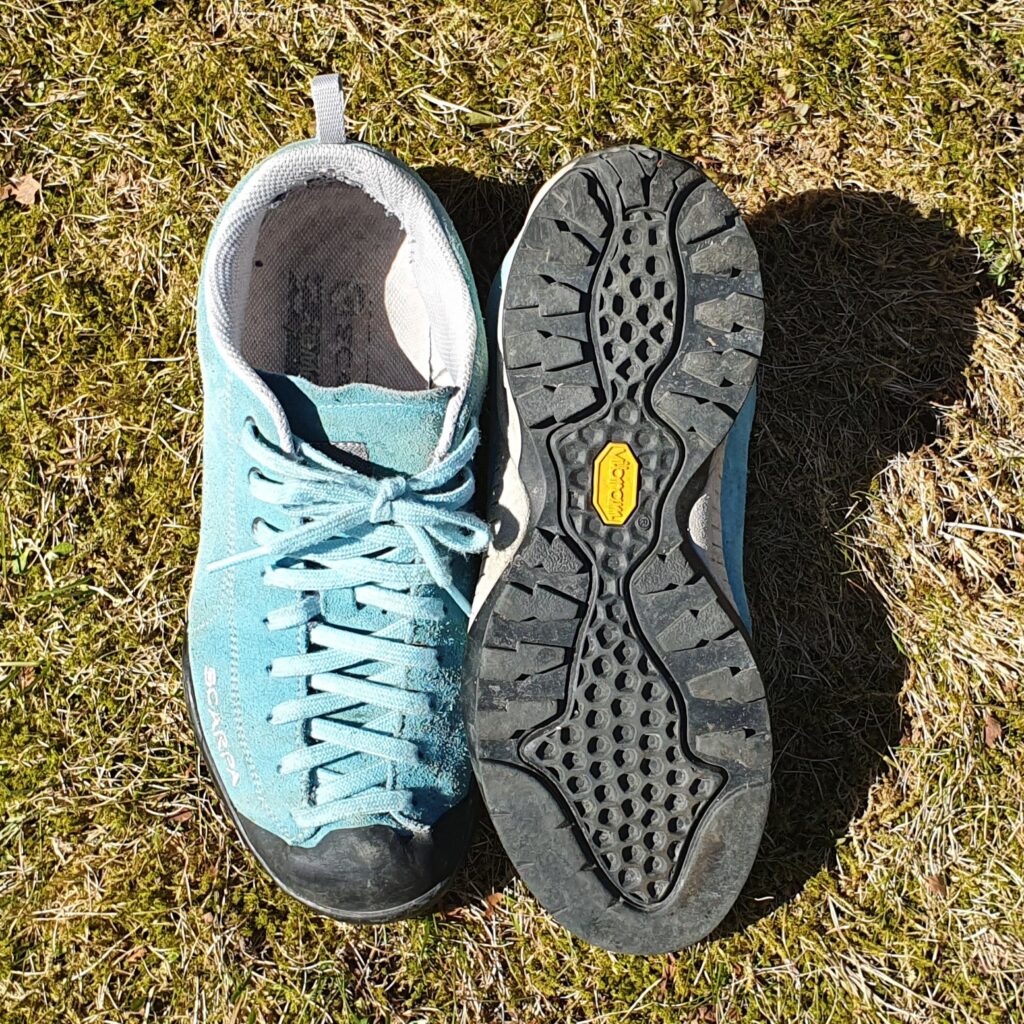
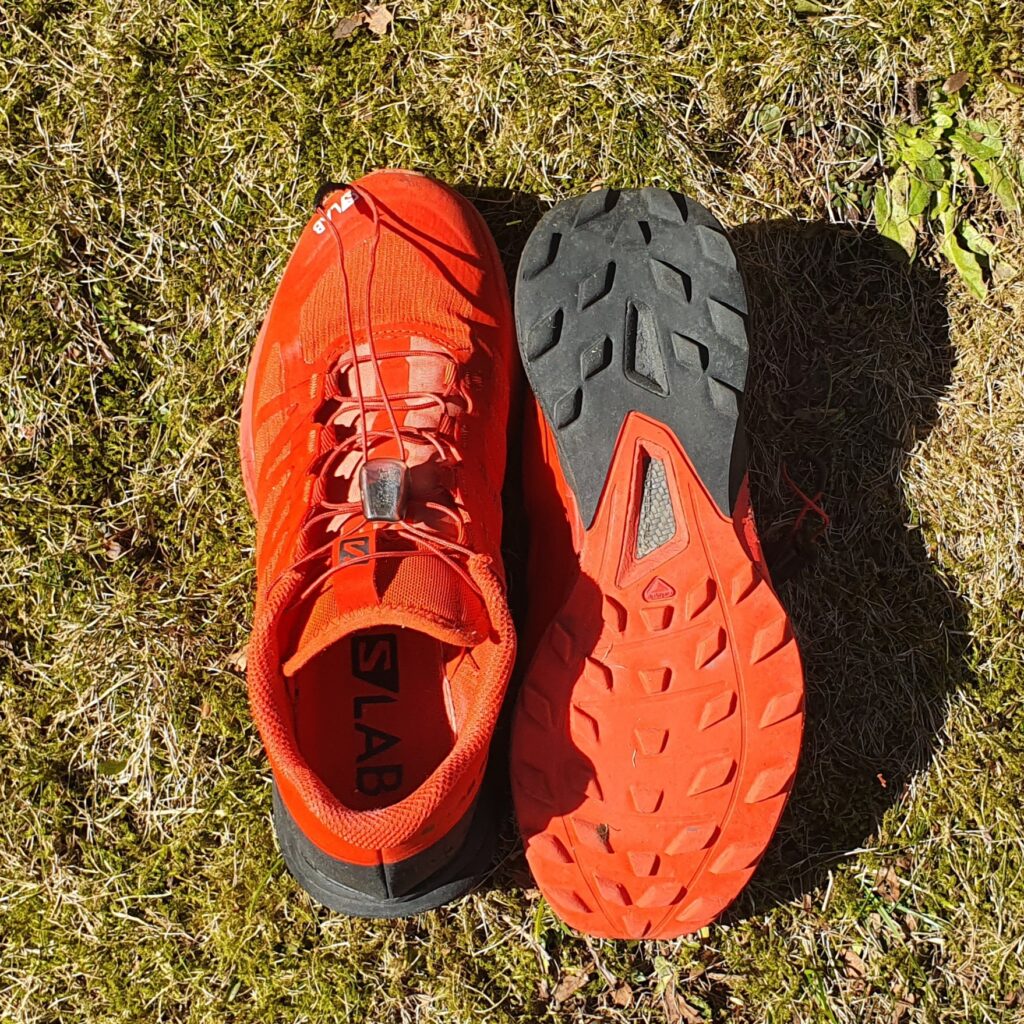
Hiking hats
When you go hiking in the Norwegian mountains, you often need woolen clothes and hats – let’s face it; being situated in the Arctic Circle does have its natural effect on the temperature.
The Norwegian Trekking Association (DNT) came up with a clever way of making layers and dressing up for the cold, a lot more fun. In 2014 they launched the Norwegian Mountain Pick Up Code, which might cause your hat to give you more than warm ears – depending on which color you choose to wear.
The main rules are rather simple:
If you are single, you wear a green hat. If you are in a relationship, you wear a red hat. And if you see someone wearing a yellow hat, they might be open to a flirt.
DNT launched the Pick Up Code initially as a prank for April Fools’ Day. However, adventurous Norwegians embraced the game, and now you can use the Norwegian mountains as your very own real-life Tinder. Just make sure to not stand by a cliff when swiping someone to the right! Read more about how to behave when flirting in the mountains in Norway here.
I prefer a cup and a jacket with a jacket with a hood for hiking in the summer which protects the head from the wind and sun. However, in cooler weather, I always have a warmer hat in my bag.
"Hiking Retreats packing advice" YouTube video for Norway hiking and yoga retreat is here.
Will you be fully vaccinated soon? Or have you taken your COVID-19 vaccination and are looking to travel sometime in the near future?
As vaccines are being rolled out across the world, it brings the promise of a return to our pre-pandemic life, or, at the very least, something close to it.
That said, it’s important to keep in mind that while these shots do come with some protection against the virus, some regulations, such as lifting the mandated use of masks, may not be happening as soon as we’d hoped.
Should you choose to travel sometimes in the near future, it’s highly advisable to continue to take health & safety precautions, such as wearing a mask, washing your hands often, and maintaining the practice of physical distancing.
While it’s not mandatory, you should also consider getting tested 3 to 5 days after arrival and self-isolate for 7 days, even though you are fully vaccinated. We are still unsure as to how much protection the vaccines offer against the new variants of the virus (and the strains continue to emerge), so, it’s always better to be safe.
In short, being fully vaccinated does give you more ‘freedom’ and peace of mind when it comes to travel but it’s in you & your fellow travelers’ best interest to maintain precautions when traveling.
Not only is it crucial for us to ‘adhere’ to local rules but also to keep personal consideration and precaution for the sake of your and others’ health and safety.
Even if you are fully vaccinated, these days, the type of travel you choose to take matters more than ever.
Domestic travel has been returning slowly but steadily starting last summer. With the rollout of vaccines, countries that are likely to reach herd immunity faster, maybe a ‘safer’ choice for locals and non-locals alike.
Many travelers are now choosing destinations that are off-the-beaten paths, those that are away from condensed cities, and often, these places are immersed in nature.
A yoga retreat in nature is a great choice for any traveler. Some retreats are easy-going while others go above and beyond to offer a wealth of activities. But no matter where you choose to go, it is easy to combine other outdoor activities such as hiking, walking, cycling, or running with your yoga sessions.
To get to your travel destination, road trips are recommended as non-public transportation is safer than using public transportation. In fact, according to the CDC, fully vaccinated travelers who go on a road trip and are moderately careful at the destination, would have a relatively ‘safe trip’.
Another way to lower risk is to choose to visit a country that is waiving restrictions for fully vaccinated travelers. At the time this article was written, only a handful of countries have gone this route, but, as summer approaches and the vaccine passports are likely to become a reality, more and more countries would consider this option to open for travel.
Lastly, should you choose to travel internationally, it’s better to focus on visiting one country, rather than opting for a multi-country itinerary. Now is the perfect time to focus on slowing down, taking longer to explore a country, immerse in its culture and traditions, and discover local gems.
It’s also important to keep in mind that while the entry requirements into a certain country might not include showing a negative test, the airline might require one to board the plane. Do your due diligence and check the requirements ahead of time so that you can plan accordingly.
Nothing supports our mind and soul to open up like a natural setting. The usual distractions are far away, and your attention and focus are directed towards what’s in front of you, quieting the mind and simplifying your thoughts.
Being in nature awakens your senses – touch, scent, sight – and you cannot help but become more aware of what’s around you and start to appreciate the little things you might usually take for granted.
The smell of morning dew and flowers, a simple bird song, a gentle breeze in your hair, touching the grass or sand, provide stimulation and make you more present. You become more in tune with yourself and the world around you.
On most retreats held in nature, you’ll have the opportunity to do some forest bathing. Also known as Shinrin-yoku, this is the practice of making contact with and taking in the forest atmosphere to receive mental and physical healing.
Read more about our yoga and hiking retreats in Norway, Alaska, and Estonia.
There are large variations in intensity between styles of yoga based on oxygen consumption and heart rate. Variation in intensity between yoga styles was due to the variability of what practitioners were doing over the whole arc of a yoga practice. Yoga practice could range from higher intensity sun salutations to lower intensity seated postures. A heated practice room, such as that in Bikram, and length of holding postures also contributed to differences in intensity ratings.
Students seek out a yoga class or practice for many different reasons. Additionally, what we mean by yoga varies considerably from one practice style to another. For these reasons, it can be helpful to identify some objective measures to describe individual yoga styles. This can help new practitioners make more informed choices about what yoga styles to begin with when they are starting out, based on what their intentions are with respect to starting a yoga practice.
Yoga is a versatile, variable tool that can have an impact on many different aspects of our well-being. We may seek out a yoga practice for many different reasons. So, it’s helpful to have a clearer picture of what individual styles of yoga offer. This article provides information about the physiological impacts of common styles of yoga practice. That can help us make choices about which style might be a good fit for us.
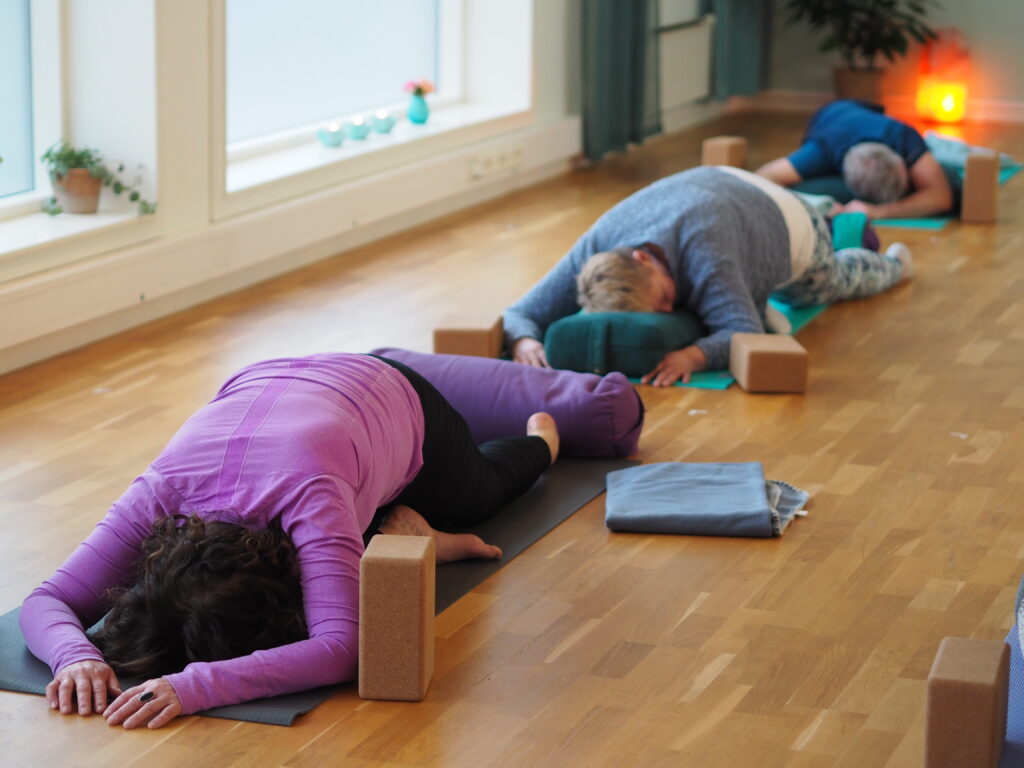
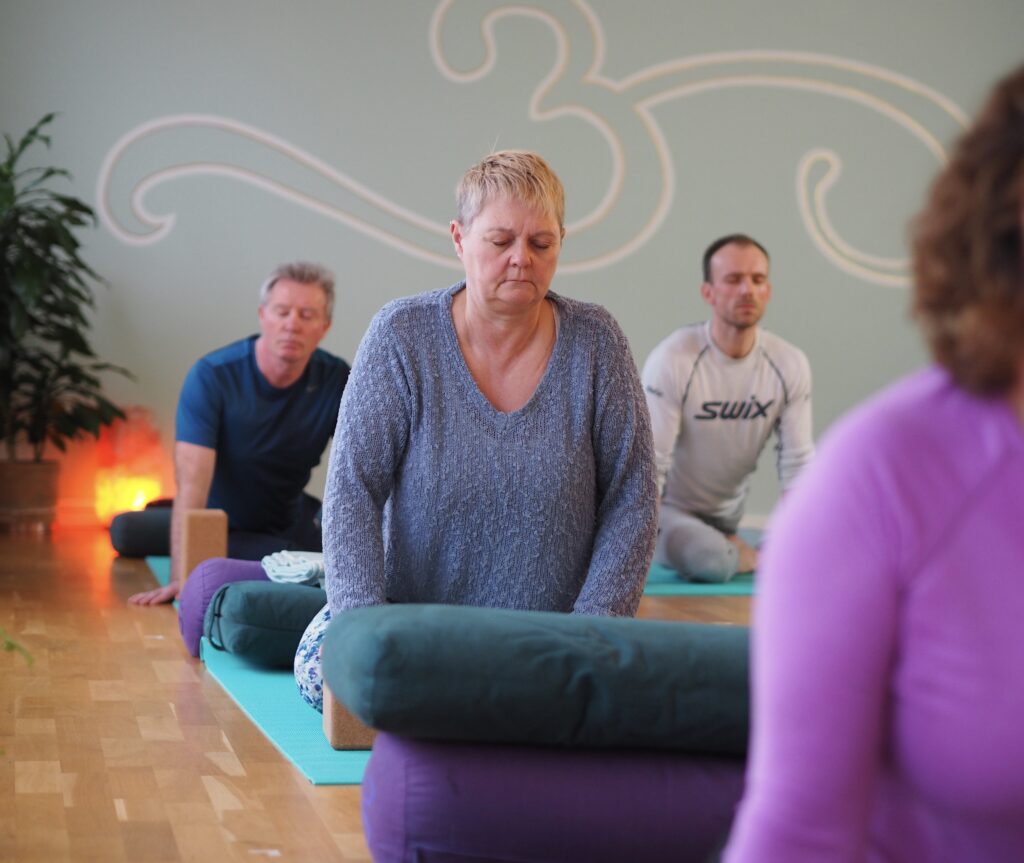
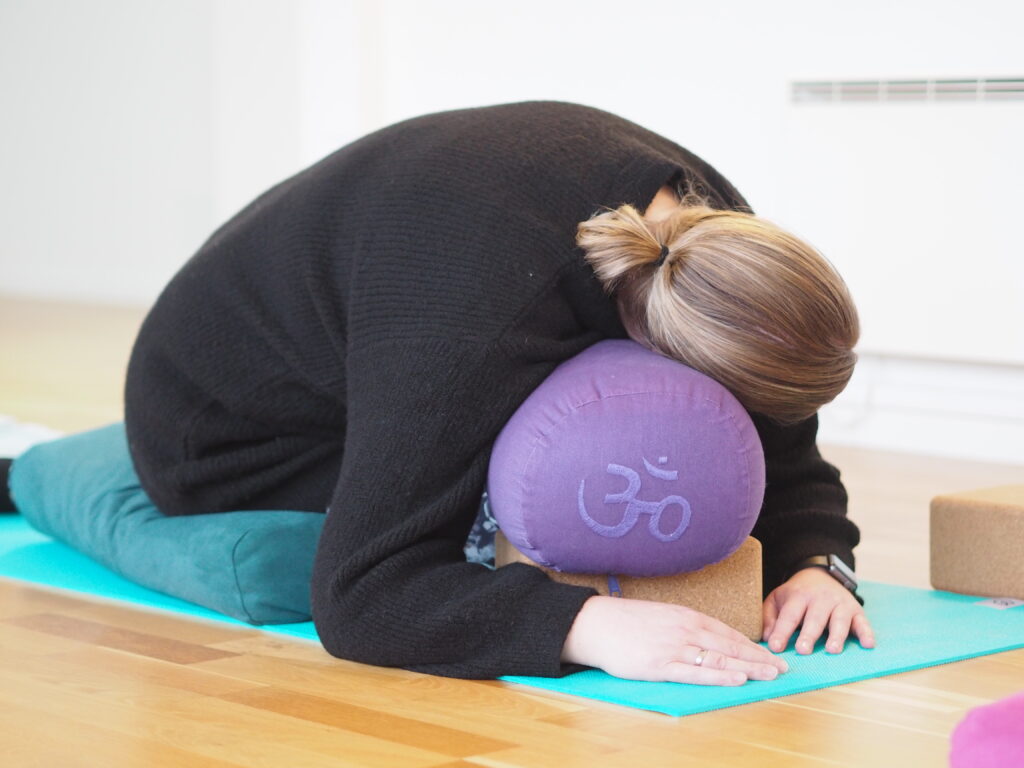
The intensity of yoga styles based on oxygen consumption:
- Hatha, Gentle or Soft Flow = light
- Yin = light
- Bikram = light
- Ashtanga, Vinyasa, Rocket = moderate
The intensity of yoga styles based on heart rate:
- Yin = light
- Bikram = vigorous
- Gentle = light
- Hatha = light/moderate
- Iyengar = light/vigorous
- Power = moderate
- Ashtanga, Vinyasa, Rocket = moderate
Ashtanga Vinyasa Yoga, Rocket Yoga and Vinyasa Flow
Ashtanga Vinyasa Yoga
is an ancient system of yoga. For each movement, there is one breath. Ashtanga Vinyasa Yoga is both a dynamically aerobic and meditative practice. It was primarily introduced to practitioners in the West by Shri K. Pattabhi Jois, a dedicated yogi, and Sanskrit scholar. As taught by Jois, Ashtanga Vinyasa Yoga is a form of Hatha Yoga that focuses on asana (posture), pranayama (breath control), and vinyasa (the linking of postures by breath and movement). An important part of Ashtanga Vinyasa Yoga is a deep sort of breathing we call ujjayi or victorious breath, bandhas or energy locks, and Drishti or our eye gaze.
Rocket Yoga
also known as "the Rocket" is a style of yoga, developed by Larry Schultz in San Fransisco during the 1980s. Rocket yoga is rooted in the practice of Ashtanga Vinyasa Yoga. It is composed of poses from the Primary and Intermediate series of Ashtanga. It was first called "Rocket" by Bob Weir because "it gets you there faster." Rocket Yoga is a dynamic and fast-paced flow of yoga. Students are encouraged to make their own interpretation of the traditional asana or can remove or modify binding postures that tend to cause students to get stuck in the traditional series. The Rocket is also divided into a three-part series: Rocket 1, Rocket 2, and Rocket 3. Each series focuses on targeted body strength and flexibility. Typically, Rocket 1 is practiced on Monday and Thursday, Rocket 2 on Tuesday and Wednesday, Rocket 3 on Friday, and Ashtanga Primary Series would be practiced on Sunday, and optionally on Thursday instead of Rocket 1. As in the tradition of Ashtanga Yoga, Saturday is the day to rest from physical forms of yoga. The Rocket 1 series is based on the Modified Primary Series. The Rocket 2 is based on the Intermediate series of Ashtanga Vinyasa Yoga. Rocket 3 (aka "Happy Hour" because you get two classes for one) is a combination of Rocket 1 and Rocket 2, practiced at a brisk pace to cover 90 poses in 90 minutes.
Vinyasa Flow Yoga
is also a dynamic yoga style but it can vary from soft to vigorous depending on the level of the group or student. Vinyasa Yoga is a teacher's interpretation of traditional yoga practice, based on the purpose of the class. If we want to emphasize that the class is slow-paced then we can call it Soft or Slow Vinyasa Flow or Gentle Flow. In a typical Slow Flow class, you will practice about half the number of poses you might practice in a Vinyasa Flow class. The pace is meditative, emphasizing peace and calm in body and mind. We hold poses longer, taking several rounds of breath in each pose, instead of moving to each breath. In that class, the asanas are practiced with an internal softness. You will focus on working in the poses using your breath, movement, and internal strength rather than the outer muscles. That type of Yoga is of medium intensity and the best way to start with your yoga practice to find out your preferences.
Yin Yoga
is a part of the original Hatha Yoga tradition. It combines the influences of Indian Yoga with Chinese Daoist practices and Western science to improve our health on many levels. With its emphasis on long-held, passive stresses of the deeper connective tissues, Yin Yoga mobilizes and strengthens our joints, ligaments, and deep facial networks. Most poses are done lying or sitting on a yoga mat or soft carpet and held for 2-5 minutes. In Yin Yoga class we're not stretching the tissue but rather, stressing it, and then allowing time for rest and repair. We are using the physical postures to help us in getting to a unity of the mind and the body. It is a platform for meditation. You can find a yin yoga video by clicking here.
Restorative yoga
is a deeply relaxing style of yoga practice. It is a receptive practice, not an active practice. Unlike the more active styles of yoga where poses "flow" into one another, restorative yoga poses are held from five to as long as twenty minutes. During this time, you are held in "shapes" while being supported with blankets, blocks, or bolsters (pillows). The shapes emulate the forms of some more active poses found in Ashtanga, Vinyasa, or Iyengar such as backbend, forward bend, twist, or inversion. When you are in the poses you are completely supported in a particular shape, which helps achieve the desired benefit - it could open up your lungs, release tension in your lower back, or any of the other physical or psychological benefits. In any style of yoga, part of the practice is about letting go of the ego. Restorative yoga is no different. Yoga teaches patience, devotion, and faith. When you apply the teachings both on and beyond the mat, your mind is better able to adjust to the stresses of everyday life and is brought into harmony with your body. You can find a restorative yoga video by clicking here.
Read more about yoga history, philosophy, and styles by clicking here.
As the end of the year 2021 is approaching let's be grateful for all the good that happened and celebrate our victories!
The end of the year is always a good time to look back and reflect. 2021 has been a difficult year for many, but there is always something good to be thankful for. In order to set new goals, we must first identify where we are now and how we got there. Is your life in balance? What needs more attention? What can you give up?
The best way to reap the benefits of gratitude is to notice the new things you're grateful for every day. Gratitude journaling works because it slowly changes the way we perceive situations by adjusting what we focus on. While you might always be thankful for your great family, just writing “I’m grateful for my family” week after week doesn't keep your brain on alert for fresh grateful moments. Get specific by writing “Today my husband gave me a shoulder rub when he knew I was really stressed” or "My sister invited me over for dinner so I didn't have to cook after a long day." And be sure to stretch yourself beyond the great stuff right in front of you. Opening your eyes to more of the world around you can deeply enhance your gratitude practice. Make a game out of noticing new things each day.
A New Year's Resolution is a list of goals you'd like to accomplish in the upcoming year. This tradition is followed by millions of people every year, and it's a great way to start the year with a positive mind and clear goals!
New Year resolutions
Sometimes figuring out how and what to write on your list can be overwhelming and confusing. But as long as you keep these five tips in mind, you'll have the perfect New Year's Resolution.
- Focus on self-improvement
- Be specific
- Set a timeframe
- Keep it short and realistic
- Get out of your comfort zone and have fun
It is important to have goals that will help you become a better person. Doing more sports, eating healthier, donating to charity, and learning a new language or instrument are the kind of things that people tend to write in their New Year's Resolution. Also, focus on yourself and not the people around you.
Remember to write down specific goals, such as “eating one piece of fruit every day” instead of “eating healthier,” so you can measure your success!
It's better to have realistic goals that you know you can accomplish than to have goals you might never reach. Stay focused on a few realistic goals instead of having a long list of impossibilities.
Don't forget what New Year's Resolutions are all about: trying new things you haven't done before and having fun while doing so! Don't feel disappointed or pressured if you don't accomplish your goals by the end of the year. Remember to just have a great time and learn from every experience!
New Year's resolutions are meaningless without the habits to help you stick to them. Don't rely on willpower when it comes to your New Year's resolutions. All you need is to create small, new habits. When the change is small, it is easier to implement and be sustainable.
Do your New Year's resolutions include a healthier lifestyle? More exercise, yoga, meditation, healthy food, growth, and development?
I think it is important to start each day with the right foot, even if it means needing to push past any feelings of grogginess or tiredness to do so. New Year's promises are easily forgotten. Therefore, you should update and renew your goal every morning. Create your morning ritual. Find a substitute for the habits you want to change. This makes the transition easier.
Set an intention for every day. It can be done on your yoga mat, in the bathroom, or while drinking your morning coffee. Be aware of your choices and mindful of your actions. Our intentions create our reality.
There are certain steps you can take each morning that could help improve your physical mobility, mental clarity, and focus while eliminating any stiffness, grogginess, or tiredness that often accompanies mornings. In the mornings our bodies are stiff and sore and the older we get the worse.
A short yoga-meditation routine every morning helps you to:
- set an intention for every single day, week, and month
- remember your New Year's resolution and move in the right direction
- loose up your muscles, removing stiffness
- increase energy in the body
- decrease stress and anxiety
- stay calm and focused during the whole day
- be present and balanced
- improve mental clarity
- be the best version of yourself
You will find my 10 min Grounding Yoga youtube video by clicking here.
Becoming grounded - is one of the most desired results of practicing yoga. Grounding connects us to the present moment. It pulls us into our physical experience of right now, and in the process, creates a sense of ease in the mind and stability in the body. Grounding creates calm, destroys stress, and reminds us of who we are by diverting our attention from thinking and making us feel at home in our own bodies. The process of grounding is an invitation to trust that we are and will be supported. It's a reminder of our deep connection to the earth beneath us, and the power it has to affect the way we think, feel, and express ourselves.
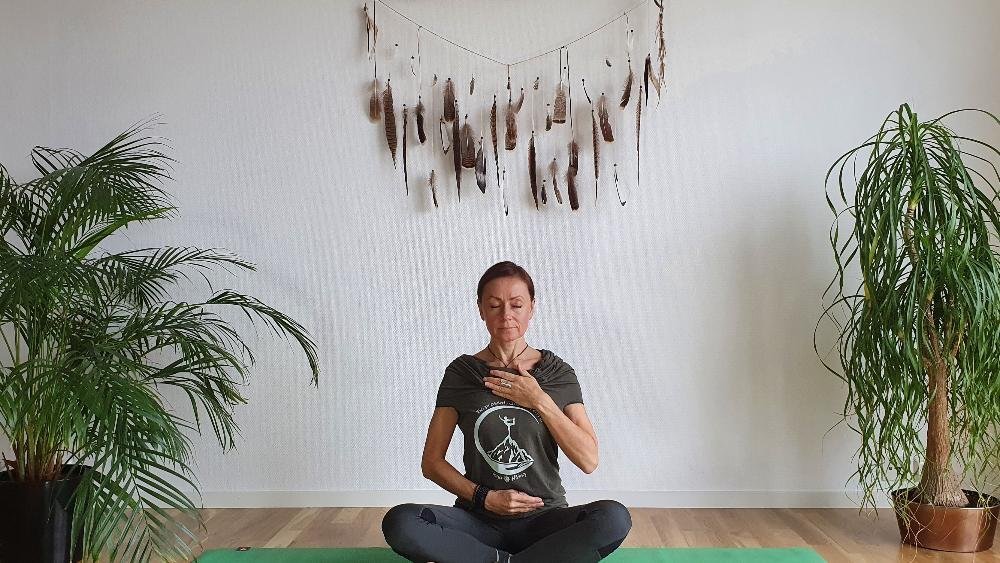
The new solar year is upon us as the Earth begins to tilt back toward the Sun, signifying the completion of another life cycle before the emergence of spring. For thousands of years the Winter Solstice has been celebrated around the world—acknowledging the shortest day of the year as a return to light, a return to innocence; a rebirth along the wheel of life as the great world continues to spin.
During this cycle, we are invited to realign with our goals and ideals as we look toward the new year ahead—despite the chaos of the holiday season as the calendar turns.
Winter Solstice has been a time of celebration, rest, and emotional and physical nourishment for thousands of years.
Setting intentions at the winter solstic practice
As we lay out the framework for our plans, we are building a path that lights the way through the darkness of winter and guides us toward our brightest future. Through continued refinement of our goals, a willingness to understand that mistakes will be made and that we may need to change course along the way, intentions are little stepping stones that lead us like a compass toward our highest potential. An intention is the starting point of a dream; what makes the unconscious conscious. It is the creative power that fulfills our heart’s desires, be it career or relationships, money or material things, personal or spiritual ascension.
Solstice practice
Winter Solstice in the Northern hemisphere coincides with the sun’s ingress into earth-sign Capricorn, the sign traditionally aligned with the knees. Kneel in gratitude for your body, your practice, your life. Let saying the word knees be a kind of yogic mnemonic for thinking about your needs. Which ones really could use some attention now? While you are working on the answer to that question, please your knees in these poses, which connect you to Mother Earth.
Much like our yoga practices, our intentions are always in flow—and are changing from moment to moment. Through the ritual of practice, the intentions we set in motion will automatically become second nature, as old layers, habits, and selves begin to fall away in this great unraveling toward the Self; our truest nature. And like a seed, an intention must be planted, nourished, and given patience. But an intention cannot grow if we cling to it—it must be released outwardly to make itself known to the universe.
Activate your intentions for the new year by turning inward and awakening your inner fire; by learning to see in the dark. Think of the Winter Solstice as the fourth and final movement of your 2020 life-symphony. Synchronize your breath to movement that’s strong and intuitive. Go slowly, and let go of what no longer serves you so that you may clear the slate for all that is coming your way.
Randonee skiing, also known as Alpine Touring, is a form of skiing in which people ascend the mountain under their power through the use of specialized bindings and skins. Skins are held onto the bottom of the skis with a sticky substance. They were originally made of animal skin, such as sealskin, but are now made with artificial materials that have fibers to hold the skis from sliding back down as the skier glides forward up the hill. Once the skier reaches the desired altitude, the skins are removed and the bare skis are used to descend.
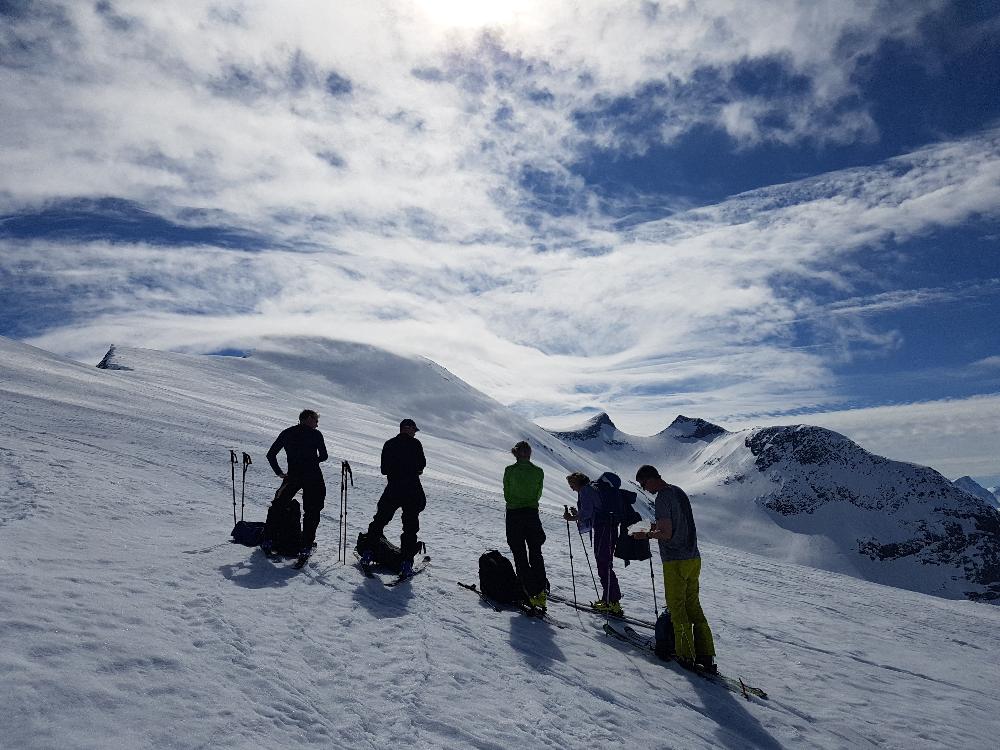
The boots have two settings: 'walking' and 'skiing'. The same choice applies to your bindings. When you're going downhill, the bindings are set to 'ski'. And when going uphill, they're set to 'walk'.
When you reach the top and remove the skins, it's a good idea to set the back bindings to 'ski' so the stoppers are on. That way you'll be able to keep up on the way down. Obvious perhaps, but when you're worn out and it's your first time, anything can happen.
The heel lift function means you lose a little grip when doing slalom (turning in a zigzag pattern). It seems that if you use the highest heel lift you'll go too fast. The mountain slopes generally start at around 25 degrees. If you go straight up an incline, you'll see the gradient signposted. If it's your first time, it may be worth testing out a gentler slope, to begin with.
Compared to cross-country skis, touring skis are sturdier and easier to maneuver in steep terrain. They are comfortable and the ski skins provide a good grip for the climb. On the way down, it's very similar to skiing in regular downhill equipment, i.e. in skis and boots.
The contrasts between the fjords and mountains are breathtaking.
Randonee skiing in Norway, Trolltind 1347 masl, Rysdalsnebba 1618 masl, Åbittind 1396 masl
From Molde, where we live, it takes about 1,5-2 hrs to drive to Jordalsgrenda. We started at 08.30 on Sunday morning, and it was worth it! The weather was dry and chilly but the clear sky was promising. We saw the sunrise over the mountains on our way up. In November, there is not much snow in the mountains yet, but it was enough to enjoy the day on skis. We were walking up to Åbittind for approximately 2-2,5 hrs, eating our sandwich on a "best view restaurant" and skiing down in a powder 20-30minutes.
We spent a beautiful day outdoors; I am so grateful to my partner, to nature, and my own body for being able to afford such luxury.


